














































A growing chorus of scientists and researchers agree: Time spent in nature makes us happier, healthier and less stressed. It increases creativity and lowers the risk of heart attack. It even makes us nicer, more empathetic humans, with more meaningful relationships and increased community involvement.
Evidence shows that being regularly immersed in a natural setting, like a park, wetland or woodlot, reduces blood pressure, anxiety and stress levels and boosts immunity. Simply having a view of nature leads to faster patient recovery times in hospitals, higher job satisfaction and increased concentration in office workers. Outdoor exercise increases energy levels and reduces anger, depression and obesity.
For children, studies show that time outdoors, especially unstructured time in more natural settings, can increase curiosity, creativity and problem-solving ability. It also improves their physical fitness and coordination and reduces symptoms associated with attention-deficit disorder. It can even reduce the likelihood of needing glasses for near-sightedness.
Studies also demonstrate that nature can have profound effects on entire neighborhoods or communities by improving the job and life satisfaction of residents and aiding community cohesion and identity. It can even reduce violence and bridge the gap in health between high- and low-income communities.
Add a daily dose of nature to your routine.
Most of us spend too much time in front of screens and too little time outdoors. It’s time to fall (back) in love with nature! The David Suzuki Foundation challenges you to spend 30 minutes a day in nature for 30 days to kick-start a nature habit that lasts all year-round.
Our goal is simple: to reconnect human beings with nature for the sake of their health and mental well-being.
Inspired by David Suzuki’s 30 x 30, we challenge our readers to get outside in our most beautiful season here in northern Minnesota.
• Choose YOUR 30 days. Any activity counts; walk the dog, take your kids sledding, engage in your favorite winter sport ... the possibilities are endless!
• Tell a friend or pick a partner to hold you accountable.
• Grab a camera and share your success with us at #lakeandco30x30.
• Cheer on your fellow challenge participants by liking and commenting on their photos AND ... challenge others!


On the tail end of winter, typically mid to late March, there are a stretch of days where the temperature is below freezing overnight and above freezing during the day. This is the time of year that sap “runs” in the trees - maple syrup season.
I first became interested in the process of making maple syrup when I saw buckets pop up on the silver maples along the streets in my community. I was curious, so I researched and decided to give it a try.
I purchased some simple supplies and decided to learn right alongside my kindergarten students, tapping a handful of healthy maple trees on in our elementary schoolyard.
Together we collected sap daily, making a chart and recording how many gallons we harvested each day.
I shared the experience with my own four children as well when we would collect sap on the weekend and when they would help me transport 5-gallon buckets of sloshing sap in the back of our vehicle from the schoolyard to our rural home. My own children have been the most involved in the processing, a full day spent outdoors boiling sap, tasting sap, and boiling sap some more until it is ready to be finished on the stovetop indoors, then filtered and bottled.
I have learned over the years, approaching the experience as a hobbyist, that I can boil 20 gallons of sap (or less) in about 8 hours. This yields enough syrup to share with my kindergarten class at our annual celebratory classroom pancake party, and a few pints for our family to savor and enjoy over the year. More sap would extend the boiling time. I would get more syrup, but it makes the experience more burdensome (boiling into the evening time or night even).
I have found my “happy place” with this small-scale approach and I look forward to the experience and products of my efforts every year.


“THERE IS SOMETHING SPECIAL ABOUT MAPLE SYRUP SEASON. THE EXPERIENCE AND THE PROCESS HAS BECOME SOMETHING I LOOK FORWARD TO EVERY YEAR, ESPECIALLY AFTER A LONG MINNESOTA WINTER.”





Collection Buckets:
Buckets are used to collect the sap as it drips from the tree. I use aluminum buckets with metal lids but I have also used repurposed plastic milk cartons.
Spiles:
I use stainless steel spiles (taps). These are inserted into a drilled hole in the tree to transfer sap into the bucket.
Hammer:
Used for securing the spile in the drilled hole.
Drill:
Used to tap a hole into your maple tree. This could be a hand drill or electric.
Wire:
I have found success securing buckets to the tree using a large loop of thin grade wire. This helps to prevent spilled sap and lost buckets in windy conditions.
Storage Buckets:
Used to store sap during the collection over the sugaring season. I use two 5-gallon food-grade buckets with lids. Collected sap is perishable, so keep it cool by insulating it in the snow or shaded outdoor area.
Cheesecloth:
Used to pre-filter any solids (such as pieces of bark) when transferring sap from the collection bucket to a storage container.
Evaporator Pan:
A large shallow pan used to boil down sap outdoors or in a well-ventilated area.
Heat Source:
In my small scale endeavors I have used both an open fire and a propane fuel source for boiling down sap, but have enjoyed the efficiency and cleanliness of a sturdy propane-fueled stove.
Finishing Filters:
Reemay pre-filters and wool finishing filters help to filter unwanted debris from the syrup as it is in the finishing stages of the process.
Maple Syrup Hydrometer:
Used to measure the density of maple syrup at a specific temperature. (optional)
Bottles or Jars:
Used to package and store your maple syrup.

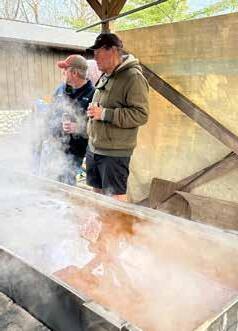

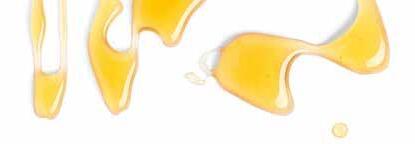

Once you give this activity a try you will likely be hooked and, like me, look forward to the special season year after year.
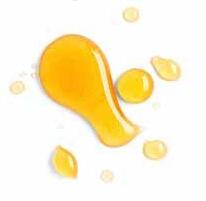
1
TAP YOUR TREES.
Use a drill bit the same diameter as your spile. Drill a hole on the south side of the tree at a slight upward angle. Insert the spile into the hole and tap firmly into place with your hammer.

2
HANG THE COLLECTION BUCKET.
You may want to secure the bucket with thin gauge wire. Large trees can handle two or three taps, depending on the size of the tree.

3
COLLECT SAP.
Check your pails each day, collect the sap, pre-filter and transfer to your collection buckets. As a hobbyist I aim for 35-40 gallons of collected sap from the sugar maples that I tap. This equates to approximately one gallon of processed syrup.

BOIL DOWN THE SAP.
4

5
Boiling 40 gallons of sap is a full day process (maybe even more depending on the quantity you collect and the sugar content of the sap). I set up my boiling station outdoors the day before, then rise early the next day to start boiling. Throughout the day I involve my children in the tasting. As the sap boils down it will turn a caramel color.
BRINGING IT INSIDE.
When the 40 gallons of sap have been boiled down to just over one gallon, I finish the process indoors on my stovetop where I have better control of the temperature.


This is the trickiest part of the process. Maple syrup that is boiled too long will crystallize into maple sugar and maple syrup that isn’t boiled long enough can spoil and will be watery because the concentration of sugar in the syrup will be too low.
To finish, continue boiling the sap until it takes on a consistency of syrup. One way to check for this is to dip a spoon into the sap/syrup. The syrup will “stick” to the spoon as it runs off. It is important to watch the boiling sap very closely as it approaches syrup, since it is more likely to boil over at this point. (Adding a small bit of butter can settle the boil if it starts to get too hot).
A more accurate way to finish maple syrup is to use a maple syrup hydrometer (a relatively inexpensive and simple tool) which uses Brix and Baume scales. The Brix scale is used to measure the percentage of sugar in the maple syrup. The Baume scale is used to measure the density of the maple syrup as it is related to the density of water. A recommended density for maple syrup is a minimum of 66% sugar (66°Brix/35.6°Baume).

There will be a small about of sediment present in your syrup. This needs to be filtered out. You do this by running hot syrup through special cloth filters. Once filtered pour your syrup into sterilized bottles or jars.

Celebrate the process by enjoying the product you have created! Each year my kindergarten class celebrates with a pancake party, and at home we savor the sweet maple syrup that we worked to create throughout the year.



Ilike the woods. I like their ins and outs, their never-ending corners, their timelessness, the opportunity I see and feel when I’m under their canvas, and their ghostly overlays between past and present. They’re a big part of my identity, and in fact, when I describe my life and who I am, I often find myself saying, “I live in the woods,” even if only to explain my choice of footwear that day.
With this issue, we set out on a quest to understand the importance of Place … roots. What makes us who we are — a topic I find so completely intriguing and ever-evolving because it truly does go beyond mere geographical location. And in the same breath, does it? Does who we are depend on where we are?
Who would you be if you lived somewhere different? Would the way you spend your time change? Who would you surround yourself with?
For me, Place is the lead character. It’s the founding narrative of our lives and encompasses the intricate web of relationships, memories and emotions woven into the fabric of our surroundings. It is the essence of who we are and where we belong. It’s a sense of connection to the people and places that shape our lives.
In Minnesota, there’s a spirit and silent resiliency as robust as our seasons and landscape — the soul of the state. From the bustling city streets of the Twin Cities to the serene wilderness of the Boundary Waters, these resilient souls thrive amidst adversity, embodying the essence of perseverance and tenacity. “Minnesota Nice” may be the stereotype, but beneath the polite exterior lies a community forged in the crucible of harsh winters and rugged terrain. It’s a place where resilience isn’t just a virtue; it’s a way of life. We had the opportunity to sit down with some of these remarkable individuals to learn more about their experiences and what it means to live, thrive and create in the Land of 10,000 Lakes.
At Lake and Company, we are dedicated to celebrating the diversity of our world and the myriad ways in which people connect to their surroundings. Through our stories and images, we challenge norms and explore alternative ways of living, inviting our readers to ponder the WHY behind their sense of place. As you immerse yourself in the pages of our magazine, we encourage you to reflect on your own relationship with place — to embrace the beauty of your surroundings and the stories that shape your identity. It is through this exploration that we come to understand the profound importance of where we live and who we are.
Thank you for following along, sharing your story and being a part of this amazing community we call Lake and Company.
In Good Company.

PUBLISHER AND EDITOR-IN-CHIEF CREATIVE DIRECTOR
GUEST EDITOR
DIRECTOR OF PARTNERSHIPS
DIGITAL MARKETING MEDIA + PHOTOGRAPHY
COPY EDITOR AND PROOFREADER
COVER IMAGE
CONTRIBUTORS
Megan Kellin — megan@thelakeandco.com
Jessie Steigauf — jessie@thelakeandco.com
Pam Wright — pam@thelakeandco.com
Jessica Tok — jessica@thelakeandco.com
Alli Aston — alli@thelakeandco.com
Justin Graddy — hello@thelakeandco.com
Anne Kelley Conklin
Hayes Scriven Photography
Pam Wright, Hayes Scriven, Alex Horder, Ashley White, Sarah Barten, Vivian LaMoore, Joe Henry, Jenny Anderson, Ryan Dechaine, Grand Sorensen, Sophia McCann, Clara Sheehan, Micah Carroll, Christian Dalbec, Colleen Wallin, Paul Schonfeld, Molly Solberg, Kate Coward, Jamie Sterling, Katya Gordon, Karen Goulet, Monique Verdin, Ryan Bramwell, Mitch
Reaume, Chris Pascone, Megan Devine
EDITORIAL + BUSINESS OFFICE
ADVERTISE STOCKIST
SUBSCRIPTIONS
10 NW 3rd St., Grand Rapids, MN 55744
For a media kit, email: hello@thelakeandco.com
To sell in your retail store, email hello@thelakeandco.com
thelakeandcompany.com (subscribe) hello@thelakeandco.com



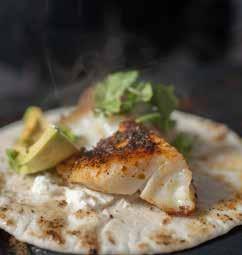


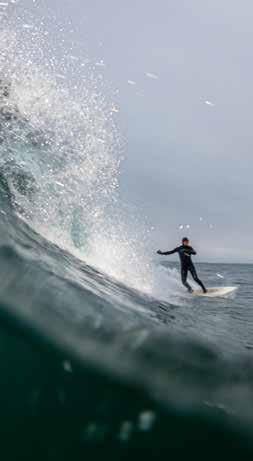


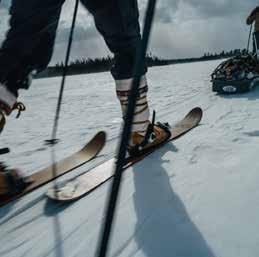






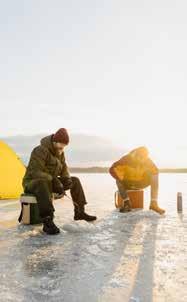
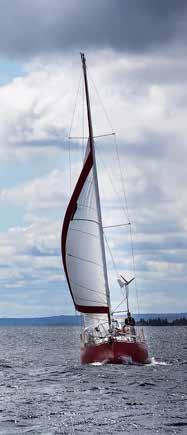



What gives you a sense of place?
For me, it’s woodsmoke. Its deep aroma carries me away to northern Minnesota, camping on a quiet wilderness lake. We’re tucked inside a canvas tent with a small woodstove cracking and popping with split pine. Outside, the snow gently settles as a barred owl calls “who cooks for you” nearby. No one else is near; just us hardy souls gathered together, sleeping under an inky sky.
In this issue, we’re featuring some of our favorite ways to experience the Midwest in the quiet season.
Join a wilderness guide as she shares her experiences of what it’s like to winter camp in the Boundary Waters Canoe Area Wilderness.
Keep eyes turned north as we highlight inspiring folks who embody the Finnish term “Sisu” of grit and determination. From winter surfing (yep!) to mushing, winter camping and fat biking, we’re sharing stories that will inspire you to explore more this season.
After you’ve spent time in the crisp air, warm up this season by learning how to take a proper sauna. Wellness is essential in these darker months. We share the basics of making the most of this invigorating experience.
Are you seeking rest? Experience a unique stay near the Amnicon River, where you can snowshoe during the day and sauna at night. A storage container has been turned into luxury accommodations with thoughtful touches and comfortable corners to hunker down in.
Where will you seek a sense of place this season?
Maybe it will come from the outdoors or from exploring your hometown or sharing a brew with a friend.
“The most important element in fostering a sense of place is to teach ourselves, or let ourselves be taught, to see with fresh eyes the place where we find ourselves.”
–Wilfred M. McClayKeep seeking beautiful places,



We are a socially conscious magazine and shop, carefully curated with a give-back message that supports adventure, innovation, conservation and community built around lake culture.

MINNESOTA - LAKE AND COMPANY
GRAND RAPIDS (FLAGSHIP)
CROSBY STILLWATER
COLORADO - MOUNTAIN AND COMPANY
STEAMBOAT SPRINGS

Join Us! Embrace the spirit of adventure and entrepreneurship by joining Lake and Company family and owning your own retail store or magazine. Dive into a rewarding business opportunity that aligns with your passion for nature. Email hello@thelakeandco.com
CONNECT WITH US TODAY AND LET’S GROW TOGETHER!

@LakeAndCompany @MountainAndCompany






KYRLLIS’S STORY OF PERSONAL GROWTH AND RESILIENCE SHOWS WHAT CAN BE ACHIEVED WHEN BUSINESSES GIVE TALENTED INDIVIDUALS EQUITABLE OPPORTUNITIES FOR MEANINGFUL EMPLOYMENT.”
Let’s start with some facts: Adult Minnesotans with disabilities make up about 12.9% of the total population, but only 5.8% of the employed population. The state’s unemployment rate is 9.8% for people with one or more disabilities, and just 3.7% for people with no disabilities.
People with disabilities are an underutilized sector of the workforce. But MDI, a Minnesota-based manufacturing company, seeks to change that. Guided by its nonprofit mission of empowering people with disabilities, MDI’s Unified Work program offers career readiness for people with disabilities, and business consulting services for companies looking to hire more people with disabilities.
MDI has been instrumental in taking participants’ career aspirations to new heights, and there is no better example than Matt Kyrllis: a resident of Plymouth who made history as MDI’s first-ever intern placed through Unified Work. Kyrllis’s story of personal growth and resilience shows what can be achieved when businesses give talented individuals equitable opportunities for meaningful employment.
Before getting involved with Unified Work, Kyrllis struggled to find work for five years. “I was never given a fair shot,” he said. But his career prospects changed after the program’s team assisted him in identifying job opportunities, refining his résumé and cover letter, and preparing him for interviews.
In November 2023, Kyrllis aced his interview and was offered a position on the spot at Minnesota Bank & Trust’s Minnetonka branch, becoming its first-ever intern. “It gave me a sense of accomplishment to go to a place where I was contributing to a larger cause. I felt appreciated,” said Kyrllis.
His experience invigorated his drive for further success. Through his journey, Kyrllis acknowledges the exceptional support he received from MDI. Speaking directly to other businesses, he says, “It’s important to support those of us with disabilities looking for work because we often get overlooked.” With a smile, he adds, “But once they meet me, they realize I can do anything anyone else can — just in a wheelchair, and with a little more time.”


WE LOOK TO THE COMMON GROUND — THE SENSE OF PLACE — FOR GROWTH AND UNDERSTANDING IN OUR COMMUNITY.”


Recently, for a business interview, I was asked why I live and work In Duluth. The derivation of the question involved two points on a map — the Twin Cities and Duluth — and a line between them. The extrapolation of the question involved a suspicion of compromise in my choice for business.
Successful business, we assume, is primarily about measurable and quantifiable details, metrics and specifications … the more, the better. A large population could mean big sales and so, too, greater rivalry, on terms varied and occasionally ruthless. Preconceptions about smaller communities tend toward lower expectations and restricted imagination, even as smaller communities share a familiar landscape: a literal common ground that is a large part of community identity. Businesses like mine, with employees from elsewhere and services beyond the town line, can be vulnerable to the parochial nature of some smaller communities, but, like children, we look to the common ground — the sense of place — for growth and understanding in our community. At the end of the day, we are also able to tell a story about why this is our home in business and in life. The story is set in our work and our new entrepreneurial project, LUM studio, as you will soon understand.
In Duluth, we are a shoreline community on Lake Superior and the mouth of the St. Louis River. We are acutely aware of The Lake. Our senses are in tune with our home. A lake in fury smells of soil, an approaching front is a cool crisp east breeze, cool nights and warm days are sea smoke and the taste of thyme, and

daylight is made of reflected sun and diffused night. Sunset can be liquid fire. Light and Water are parts of our culture.
What better place to be the designer of built form, where light defines surfaces, texture, shape and distance? What better place to know our neighbors through shared sensibilities about this place we call home? This year, which was a time of great change for my architectural firm, CF design, I looked back on the gift we have given ourselves by being here, and realized there is more we can do for our community, to strengthen the bond we in Duluth have with the unique and special sense of light, transformed here by the character and behavior of the lake.
In September, we opened LUM studio, adjacent to CF design. LUM studio is a carefully curated collection of international LED lighting, exemplifying reflection and diffusion. The gallery is for contemplating the possibilities of illumination in keeping with our local experiences with light. It is a quiet space to learn about living with these important fixtures and, if the desire is strong, we will help you purchase. It is also following the deep history of a single Danish light fixture, designed in 1924: Poul Henningsen’s PH5 pendant. The PH5 may be the most architectural of all light forms, designed to light itself and evenly light below the fixture, from an unseen source of light; it’s designed to transform the source of light. This is the design of a person on a shore by the sea who also realized the powerful partnership of water and light through his own sense of home. His story is like ours. Our story can go further and include this Culture of Design through light.
Monday – Thursday | 8am to 5pm Saturday by appointment
lumstudio.us


IT WAS GOOD TO LIE THERE IN OUR BAGS WATCHING THE GLOW OF OUR DYING FIRE AND THE DEEPER GLOW OF SUNSET BEYOND; BUT MOST OF ALL, IT WAS GOOD TO FEEL THE GROUND AGAIN AND TO KNOW WE WERE BACK IN A COUNTRY WE LOVED.”Sigurd F. Olson, writer and environmentalist for the BWCA

Peering out from my tent, I check my thermometer. It’s –22°, frosty and still. “Who camps in these temps?” I think. The air on my face hits like cold metal. Everything is still outside; not a breath of air nor sound of beast. Light is beginning to flood our white canvas tent.
Rubbing my eyes, I look around. The floor is filled with a rainbow of lumpy sleeping bags. Somewhere deep inside each one is a body. Stirring quietly, I pull on my fleece, ready to brave the outdoors for a very quick bathroom break. The reward for the morning trek is that the sun is breaking through the trees, casting long rays of yellow and orange. I bask in solitude as I peer out over the beautiful expanse of lake from our campsite in the Boundary Waters Canoe Area (BWCA) Wilderness in northern Minnesota.
Seasonally, I work up north as a wilderness guide, taking others winter camping into this million-acre landscape where travel is mainly by water. Many folks I talk to wonder why anyone would camp in the cold and follow up with questions about staying warm. But it’s Minnesota; sometimes winter lasts six months. Or it feels that way. We all find our ways to embrace it. This is mine.
Winter camping must be deep in my Scandinavian blood somewhere. In Norway, the Indigenous Sámi people have populated the Arctic Circle for hundreds of years. This raises the question: how were they able to survive the harsh weather for so long? Visiting their settlements, one will immediately notice a tipi-like structure called a Lavvu. Light and strong, they fit well with their nomadic lifestyles. Inside the center of the structure is a fireplace.
Unlike the Sámi, we do not use a Lavvu on our winter camping adventures; however, we do have a cozy canvas tent, complete with a small woodstove. Trekking over the ice on our backcountry skis, we seek a quiet cove filled with tamarack.
The group I’m with busy themselves by packing down the snow with their skis. While it firms up, I set out a table with a charcuterie board. Is there anything better than good food outdoors? If you’re gonna haul it, why not bring some fancier eats?
For the next few hours, we set up camp, staking down the large canvas wall tent and gathering and splitting wood. Someone grabs the ice chisel and makes a hole where we’ll scoop up water for drinking and cooking. The sun sparkles and white pines cast long, blue shadows across the shoreline. Nearby, I spot a thread of fox prints wandering off into the distance. My world is silent, save for the occasional chickadee.
In the afternoon, a small group heads out to ski and explore the surrounding area. When they return, they report a wolf-kill not too far away. Wolves have caught a deer, and very little of it remains other than a circle of blood and a few guard hairs.
Our group gathers around the woodstove, which snaps and cracks with pine. A pot of water from the lake is hot, and mittens grasp mugs as I serve up hot cocoa and tea. It’s warm enough inside to sit in thin layers.
I mix up a batter for cornmeal biscuits while chili bubbles on the stove. Warm scents fill the air as people prepare their beds, trying to create order in the piles of sleeping bags, pillows and pads. Everyone eats quietly, hungry from the travel and the chores. Once dishes are scrubbed and dried, we head outdoors and make a campfire under the stars. The deep inky bowl of the sky blankets us, making us feel small. If we’re lucky, we may catch the northern lights on one of these nights.
A barred owl calls and we reluctantly head into bed. Hot-water bottles are tucked into our bags, providing assurance of warmth. I fill and dampen the woodstove one last time. Over the next few hours, it will slowly go out, a tiny flicker of light escaping the cracks. We stay warm, tucked in our heavy down bags.
The following morning, I wake up early. I gather more water from the hole as an ice fog hangs in the trees.

Soon a breakfast of veggie hash will be cooking and the day’s plans will be made. Everyone slips out of their warm bags, adding a few new layers.
We decide to take a day trip to a nearby creek drainage that isn’t accessible in the summer. It’s a landscape in flux. One side has barren trees, evidence of a previous wildfire, while the other side is thick with black spruce and white pines. Eventually we ski to a spot where we hear running water. Beavers have impacted this area, so it’s not uncommon to find pockets of open water in creeks. We pause, sitting on pads in a snowbank while I heat up a pot of homemade tomato soup and serve up grilledcheese sandwiches.
It’s early March and, though we’ve had a very cold spell, today is warmer and you can feel the sun moving toward spring. We wander a little farther down the drainage and see more prints — fox, mice and deer. In one pocket is a small cascade of water and we listen to its bell-like sounds as it falls over rocks, headed south.
Eventually, we make our way back to camp as the sky changes from blue to purple and pink. The contrast of brilliant color against a white snowscape is dramatic. Islands darken into sharp silhouettes of pine.
It’s time for me to gather more wood, light a curl of birch and watch it lick into a hot, bright flame. Warmth comes again soon.
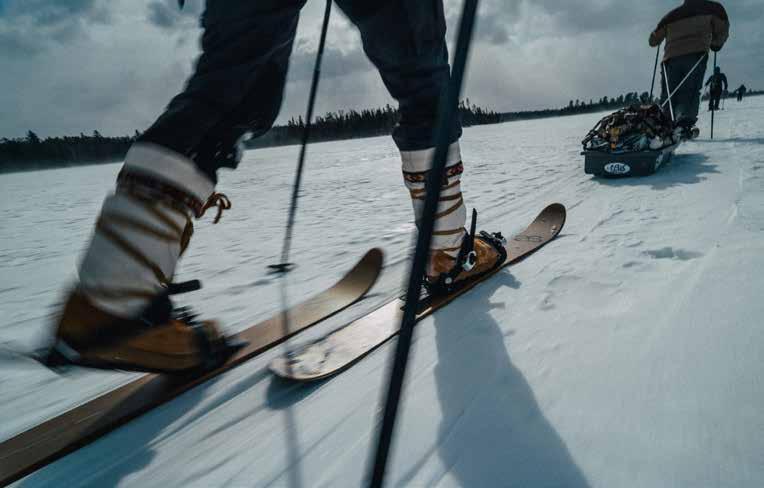

Winter is a great time to experience this wild and remote place. There is total solitude, and often the only evidence of any other living thing is the tracks of the wood-folk that call it home.
The best time to see wildlife is late February and all of March. The days are longer, and often warmer, and the animals are beginning to ready themselves for spring. Keep an eye out in the morning and at dusk when they are most likely to be crossing the easy expanse of a lake. Black bears, gray wolves, moose and a host of other unique and interesting animals call the BWCA home.
The area has been explored for thousands of years. If you look closely, you may see evidence of these intrepid travelers: the Anishinaabe, fur traders and French voyageurs. Thanks to continued protection, we all have the opportunity to experience the beauty and solitude of this unique boreal wilderness.

THIS IS A LITTLE-KNOWN STORY OF MILLE LACS BAND MEMBER MARTIN KEGG, WHO CARVED OUT A UNIQUE PLACE FOR HIMSELF IN HISTORY, AS RECALLED BY HIS GRANDSON, CURT KALK.
Written by SARAH BARTEN and VIVIAN LAMOORE Photography by MINNESOTA HISTORICAL SOCIETY
In the heart of central Minnesota, on the picturesque Mille Lacs Lake, nestled within the Mille Lacs Band of Ojibwe Reservation, a unique story is revealed. This story is about Martin Kegg, a man whose modest cabin, constructed from logs harvested on Shawbushkung Point in the 1930s, bore witness to the ever-evolving landscape of human relationships and the quest for survival.
Shawbushkung Point, a land rich in history and culture, is on the homeland of the Mille Lacs Band of Ojibwe. But it has not always been an easy journey. It is named after Chief Shawbushkung. Shawbushkung became chief of the Mille Lacs Band in 1854 after the death of Chief Nayquonabe, who was a signatory on the Treaty of 1837, which protects the fish, wild rice and trees in a large area from the western border of Michigan to the Mississippi River.

Shawbushkung was a very young man at that time and he went on to become one of the most influential and colorful leaders in Mille Lacs Band history. When he was young, U.S. government workers came to his home while surveying the land to report back to the Bureau of Indian Affairs. Historians tell the story that Shawbushkung knew the men were hungry and invited them for a meal. But he had his wife prepare one meal for him and his family. As they sat inside his home eating, he made the surveyors sit outside and wait. When Shawbushkung and his family finished eating, he asked his wife to prepare another meal for the surveyors.
He said to the men, “You might find it strange that I make you wait to eat, but when I was in Washington, they told me I should live and do as white men do. I saw white man had everything and people of a different color had little. People of different color were made to wait outside and could not come inside to eat. So here I have everything, and you have nothing. You are a different color, so I should not let you in my house.”
Then he let his wife feed them.
Whether that is part of the reason the 80 acres of land at Shawbushkung Point was once surveyed as agricultural/farm land or not, we are not certain.

In 1855, another important treaty was signed between the Mille Lacs Band and the United States of America, laying the foundation for the Band’s enduring presence in the region. But this story is not about treaties or Chief Shawbushkung; it’s about a man who carved out a unique place for himself in history.
Martin Kegg’s cabin on Shawbushkung Point was far from grand. It was a simple abode, where just a few rooms separated the adults from their 13 children. Martin and his wife, Maude Kegg, were dedicated parents, raising their large family in this rustic setting. While Maude’s name has become known in Minnesota state history for her linguistic work with the Minnesota Historical Society, her exquisite woodlands beadwork and birchbark baskets, and her work at the local trading post, Martin’s contributions have remained relatively obscure.
As we mentioned earlier, the land where the Keggs built their home was once recorded as farmland. Martin and Maude were not actually farmers, as history sometimes says, although they did have a garden containing vegetables, berries and cultural medicines. As a young girl, Maude spent each winter living in a farmhouse and attending school. But she spent the rest of the year following the traditional Ojibwe seasonal cycles. In the spring, she and her family moved to a sugar bush camp along the shores of Mille Lacs Lake. There, they harvested sap from maple trees and processed it into maple sugar. They also returned to their farmhouse to plant gardens and harvest berries. In 1917, she met Martin at a Midewiwin ceremony. She married him in 1920 in a traditional Ojibwe ceremony; two years later, the couple had a Christian church wedding.
They moved to Shawbushkung Point in 1942, and Martin began his career. Martin’s connection to the land and the lake ran deep. He set up a guided resort-style fishing business, and it’s here that his true legacy begins to emerge. Today, the Shawbushkung Point area reveals the history of his enterprise. This spot was carved out through centuries of ice movement during the spring thaw and winds. Now it hosts a modern powwow arena, in front of what was once Martin’s unnoticed access point to the lake.
Martin established his own access to the lake, located conveniently close to the cabin. Receipts, still preserved, tell the tale of a unique
arrangement. Handwritten documents from the Mille Lacs Reservation Business Committee (RBC) indicate that Martin paid $4 a month to the Mille Lacs Band of Ojibwe to operate his business on land held in trust for the tribe. The Band is referred to as the Mille Lacs Band of Chippewa Indians in these records. That was considered a lot of money in those days, but records indicate that he never missed a payment.
His fishing business was a lifeline for nontribal members, including the local farmers and those who traveled from the Twin Cities area seeking solace and adventure on Mille Lacs Lake. For a mere 50 cents, they could park their cars in Martin’s yard and pay $2 per person to use a boat, which he would then tow out into the lake. Martin often strung several boats together, each set to be dropped off in different fishing spots. After four hours of angling, he’d return to gather the boats like a train, towing them back to shore. The men from the city would deposit their catch in barrels of ice brought from home, ready to transport their bounty back to the urban bustle.
Often, in the off seasons when food would become scarce for the local farmers and they had depleted their winter stash but fields were not ready for planting, Martin would sell fish to them.
Martin was no stranger to showcasing his three methods of fishing: spearing, angling and netting. His fishing nets hung neatly on the exterior wall of his cabin, his spears displayed proudly on nails on other walls, and a magnificent set of moose horns adorned the gable peak of his humble home. The city fishermen recognized that Martin had been there long before they arrived, but there was a mutual understanding between these two worlds — a harmony based on survival and respect for each other’s methods.
Martin Kegg, an unassuming figure in history, played a vital role in bridging the gap between cultures, making way for a peaceful coexistence between the Mille Lacs Band of Ojibwe and the city dwellers who sought adventure on the lake. His legacy lives on, not just in the records of the past, but in the very fabric of Shawbushkung Point, where tradition and enterprise found common ground, creating a space where “we all need to survive” was a way of life.

The times they are a-changin’. I can remember, as a kid, getting permission to use my brother’s Coleman lantern as I wanted to get out on the ice just before light. I would first make sure to fill up the lantern from a 1-gallon can of white gas, screwing on the metal gas cap of the lantern nice and tight to hold in the air pressure. I had to check and make sure the delicate mantles were in place and the ash hadn’t broken off from being bumped along the way. I then pumped the primer to make sure there was enough pressure in the gas tank to push out the fuel. Next, I would light the match, carefully placing the flame inside the tempered glass and just below the mantels. I would turn the dial a quarter until I heard the “hissing” of gas coming out, and — poof! — it would fire up.
Many mornings were below zero. I would walk out pulling a sled with a hand auger, a metal ice scooper, a 5-gallon pail of jiggle sticks, some tackle, a container of wax worms and a bucket of minnows. After walking a couple of blocks out onto a frozen lake, I would drill two holes by hand, clean out the holes with an ice scoop and place the lantern in between the holes so I could see.
I would add a small lead weight with a clip (called a depth finder) to the hook of my ice jig and lower it down until it hit bottom and set my bobber just a little way off the bottom. Next, I would sit on my bucket and jig, watching my bobber with anticipation, and constantly clearing the freezing hole. These were the old days of ice fishing and are absolutely night and day compared to ice fishing today.
In today’s world, I may still walk out, depending upon how thick the ice is, but I am dressed in a high-tech ice-fishing suit made up of bib overalls and an ice-fishing coat with layers of high-tech material to repel moisture and retain heat. The jacket has reflectors for safety at night and big pockets, some felt-lined to warm my hands. These suits are very warm and comfortable with flotation built in, just for peace of mind if I should ever go through the ice.
I pull a collapsible fish house with all of my gear in the sled. Over my hat I wear a small, but very bright, LED light,
which lights up the ice wherever I am looking, hands free. My Navionics app is open on my smartphone as I walk. In great detail, it shows me the exact structure and depth of the lake exactly where I am standing or walking. No guesswork on how deep I am or where the structure is. This app saves me time and prevents me from drilling a bunch of holes, trying to figure out depth.
Once at my spot, I pull out the lightweight auger powered by a brushless cordless drill from the sled built into my flipover fish house. Drilling a hole only takes seconds. Once my two holes are drilled, I give the drill a quick spin while in the hole to clean out the ice chips, and the holes are ready.
I then situate my collapsible fish house in front of the holes and flip it over my head. I am now protected from the elements. If I want heat, I simply pull out my compact heater, fueled by a 1-pound propane cylinder, which is right behind my chair in the sled of my fish house, set it on the ice in front of me, press the button a couple of times, and I have heat.
If it is dark, I have a small battery-powered lantern that lights up the entire area I am fishing with a press of a button. No matches, dangerous white gas, lantern smell or sizzling hot edges that can burn skin, fishing line or an expensive ice -fishing suit in a millisecond.
I place the transducer of my ice-fishing electronics into one of my ice holes and turn the dial to “On.” Modern ice-fishing electronics show me what is happening under the ice. It shows depth of water and where my ice jig is as it is lowered to the bottom.
It is extremely helpful to know if there are fish below me. If not, I may consider changing spots. It’s also very helpful to understand where the fish are in the water column. Even if the fish are below me, if I am fishing way above or below them, my catch will be minimal.
Electronics tell me how the fish are reacting to my ice jig and if how I am jigging is getting the fish to bite. If they are not, it is time to change things up and try something different. Back in the day, this would have been heaven!
Resorts across the ice belt offer heated fish houses all ready for both daytime and overnight rental. In addition, they either plow ice roads or offer ice transportation to and from your heated fish house.
For many, even a collapsible fish house is too much work, and perhaps rudimentary. Many ice anglers have taken it to the next level and ice-fish out of a wheel house.
Basically, a wheel house is a well-insulated RV on wheels that easily lowers to the ice so you can ice-fish from inside. The floor has strategically placed holes with covers over them for travel. Simply remove a cover and you can drill a hole in the ice and fish.
Wheel houses have enabled ice fishing while in the comforts of your RV with heat, TV, cooking facilities, a bathroom, beds, a gas fireplace, underwater cameras to watch the fish on the big screen and more. For many, that is their kind of ice fishing.
The advancement and popularity of wheel houses has made ice fishing wildly popular with many who normally wouldn’t be as excited to get out on the ice. I think it is safe to say, for many who have recently taken up the sport of ice fishing, this activity is as much social as it is about catching fish.
Another option that many are enjoying, without having the investment of a wheel house, is renting a fish house through a resort. Resorts across the ice belt offer heated fish houses out on the ice ready to fish. They do the work so you don’t have to. The fish house is placed in a good fishing spot, the holes are drilled and the heat is on. Literally, all you have to do is show up and start fishing.
You can rent a sleeper fish house and spend the night on the ice. Bring a sleeping bag, a pillow, food and drink, and enjoy the peace and tranquility.
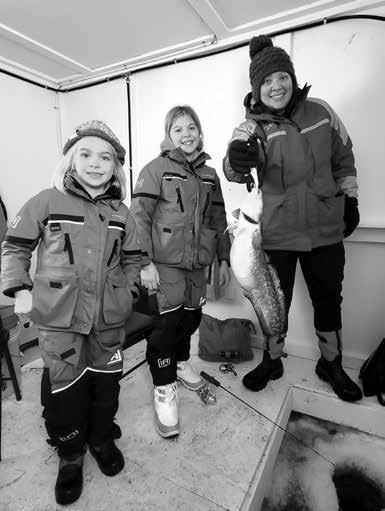
With advancements in fish houses, heaters, equipment and electronics, ice fishing has become a winter activity that is comfortable and enjoyable. Many who are by no means hardcore ice anglers are enjoying the many social aspects out on the ice.
Others rent a day house, preferring to sleep on shore and enjoy the modern conveniences as well as the bars and restaurants common around popular ice-fishing destinations.
Some resorts plow ice roads so you can drive to your fish house. They will give you specific instructions on where to access the ice road, how far out on the ice to drive and where your house is located. Most ice-fishing resorts and outfitters drive the ice road each morning before anyone hits the ice, making sure there aren’t cracks or ice upheavals. If so, they have various bridges, plows and other equipment, as well as experience, to keep you safe.
Some resorts provide ice transportation to your fish house. Examples are light ice rigs (a very lightweight vehicle with heated enclosed trailers pulled behind them), bombardiers and track rigs.
Resort ice guides will typically check on you throughout the day to make sure is going well. Resorts will clean your fish at the end of the day, and in some cases, will cook up your fresh catch. Many fishing resorts use their famous breading and homemade tartar sauce that has been perfected over the years. Now, this is living!
Ice fishing has really changed. Like many things in life, it has become easier and more enjoyable. This is the new culture of ice fishing enjoyed by families, those who are not hardcore anglers, and some who simply want to relax and enjoy an outdoor adventure during the cold winter season. Its popularity continues to grow.

Ice fishing can be a relatively inexpensive activity. Pictured is the inside of a collapsible fish house at night. A small heater keeps you warm, ice-fishing electronics show what depth you are fishing and when fish are below you, and a battery-powered lantern provides you plenty of light. All these advancements make the sport even more enjoyable.
THE OLD DAYS OF ICE FISHING ARE ABSOLUTELY NIGHT AND DAY COMPARED TO ICE FISHING TODAY.”


The fact there is an article about eelpout is progress for this species. Not that long ago, some ice anglers would consider these fish a rough fish and throw them out on the ice for the eagles and ravens to eat. It should be noted it is illegal to dispose of fish in this manner, but nonetheless, anglers today have a new interest in eelpout, and for a number of good reasons.
The eelpout is a fish that has many names. Burbot, freshwater cod, lawyer and “poor man’s lobster” are all synonymous with the pout.
[o] Ryan DeChaineThe one eelpout story shared with me at a sports show was a classic. I was conversing with an ice angler in his early 20s from the Twin Cities area who shared with me his first experience with eelpout up at Lake of the Woods.
“We stayed in one of the resort’s sleeper fish houses and I hooked into something nice,” he explained with excitement. “We all thought it was a walleye and then we saw it just below the ice. It was an eelpout. This thing was crazy. When I got it in the hole, it was twisting its body so much, it almost came up the hole backward. We finally got it up on the floor of the fish house, unhooked it and let it go. It really freaked me out. That night when I went to bed, I kept thinking about that pout and just couldn’t sleep. After a long time of just lying there, I got down from my bunk, put covers on all of the holes and went back to bed!”
Not all pout stories are so dramatic. In fact, when people come up to Lake of the Woods now, they often comment on how they hope to catch an eelpout or two and even cook them up.
Jenny Anderson puckers up at the eelpout kissing booth at the International Eelpout Festival in Leech Lake, which is held every February. Legend has it that a kiss will bring good luck in the coming year.
Back in the day, eelpout were actually commercially netted out of Lake of the Woods for the very concentrated oil in their liver. It was found that the burbot liver oil was very high in vitamins A and D — in fact, six to eight times more potent than cod liver oil. In addition, an eelpout’s liver is about 10% of its body weight and approximately 6 times larger than that of fish of a similar size.
In fact, oil from the burbot’s liver is what started the Burbot Liver Products Company in 1935. That company eventually changed its name to Rowell Laboratories in 1949 and was located in Baudette, Minnesota.
Today, burbot are sought after by ice anglers as a sport fish. One desirable aspect to catching an eelpout is the fight. These fish don’t give up easily. They are normally good sized, and they run and shake their head, which is often a giveaway it is an eelpout. Don’t let your guard down, however, as it is hard for many to distinguish between the fight of an eelpout and a big walleye.


Boots straddle an ice fishing hole while someone patiently waits for a pout. To access fish, holes are drilled throughout thick ice on lakes, using an auger.
The other reason they are becoming popular is they are great table fare. The word is out: eelpout are delicious. A member of the freshwater cod family, they have firm flesh, giving it a unique texture.
Anglers fillet an eelpout by removing the strips of meat above the rib cage referred to as the backstraps. There isn’t much meat over or below the rib cage. The other source of meat is the section of tail meat on both sides of the fish just behind the rib cage.
Some cut the eelpout meat into small pieces and boil it in either salted water, 7UP or Sprite. The trick is to dip the cooked pieces in melted butter for a unique experience most really enjoy. This is the culinary experience anglers across the ice belt consider “poor man’s lobster.”
Ice anglers also fry, bake and broil burbot, and it is delicious prepared this way as well. The meat is similar to cod or haddock.
The majority of ice anglers don’t actually target eelpout; however, that is starting to change as well. Most pout are caught by unsuspecting walleye anglers while ice fishing with some form of live bait near the bottom of the lake.
Pout are most active in the winter months. They feed on minnows, small fish, crayfish, critters from the mud and other aquatic insects.
Burbot actually spawn under the ice from mid-winter into early spring. Reproduction can happen with pairs, or in some cases dozens, all swimming together in an

intertwined tight school. These spawning areas are normally over sand and gravel in shallower water.
It is rare to catch an eelpout during the warmer months of the year. The fish is much more active during the winter months when the water is ice cold. Hence, the discussion about this fish usually happens during the ice-fishing season.
Fisheries biologists have said eelpout are a good indicator of both good water and good habitat quality. If eelpout are present in a body of water, those two qualities are present as well.
The past couple of Minnesota state-record eelpout have come from Lake of the Woods. The current record is a 19 lb., 10 oz. giant that measured 33 inches in length with a 23 7/8-inch girth. Many are confident that the record will again be broken.
The eelpout’s reputation is getting better. Burbot are no longer considered rough fish in the Minnesota fishing regulations and have been listed as a game fish in the 2022 Minnesota fishing regulations booklet. As the saying goes, “The times they are a-changin’.”
The next time you are ice fishing up on Lake of the Woods, or perhaps another cold-water lake in the north country, be ready. There is a good chance you could hook up with this freshwater member of the cod family. If you do, just remember how far this fish has come. Once considered a junk fish to some, it is now being considered a delicacy by many.
Eelpout are delicious. The trick is to dip the cooked pieces in melted butter for a unique experience most really enjoy

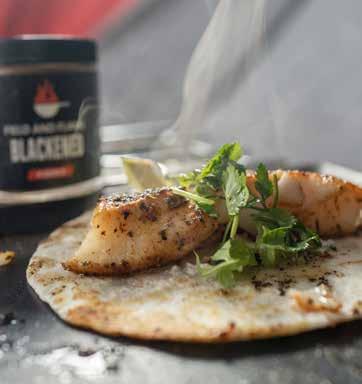


Ingredients:
• 4 fillets burbot
• Field and Flame Agate Bay All Purpose seasoning
• 1 pound of the best butter you can buy
Cooking steps:
1. Melt butter on low heat.
2. Once butter is melted and at a simmer, add burbot fillets. Do this in batches if you don’t have a big enough pot.
3. Poach for 10 minutes or until fish starts to flake.
4. Remove carefully and set onto a plate lined with paper towel.
5. Season with Field and Flame All Purpose seasoning.
Poor Man’s Lobster Roll filling:
• 2 green onions, thinly sliced
• 3 Tbsp. of mayo
• Half juiced lemon
• 1 stalk thinly sliced celery
• Cooked burbot fillets
• Field and Flame Agate Bay seasoning
• Salt and pepper to taste
1. Combine all ingredients except fish and onions.
2. Mix thoroughly.
3. Taste and adjust seasoning as needed.
4. Cut fish into chunks and fold carefully into toasted brioche or hot dog bun
5. Garnish with thiny sliced green onions.




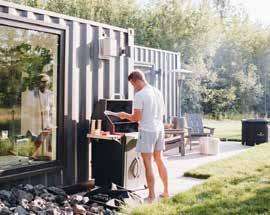


From nomadic hunters roaming its shores nearly 9,000 years ago, to me, a young blonde kid running on its banks and jumping in, there is a rich history along the banks of the Amnicon River. This is the story of my life becoming a part of it.
My parents made the incredible decision to buy 10 acres on the Amnicon River 20 years ago. The small cabin was a short 15 minutes from our house, but because my dad was a professional fine artist (he worked from home) and my siblings and I were homeschooled, we were looking for a nearby escape. A place to land at the end of a workday, where the to-do list didn’t exist. The land came with a small stinky house with a woodstove and spawning whitefish tiled into the floor in front of it, as an Ojibwe tribute to its bordering river, the Amnicon (whose name means “spawning ground”).
Dirt, trees and water. My childhood showed me firsthand that less is more along the Amnicon River. What I’m sure felt like one massive project to my parents quickly became my playground. The property was purchased at the end of that summer, so the first full season I experienced there was fall. Days consisted of endless wood chopping and hours clearing the front hill to reveal the incredible river view. As night rolled in, my mom would come outside in between applying layers of paint, carrying a massive tray of pizza rolls — the perfect comfort food to warm our chilled bodies.
The house is propped on a high hill, earning that river view its nickname of the “luge” in the wintertime. We put in hours carving banks and shoveling in snow for jumps, awaiting the sledding party of the year. My mom lit dozens of lanterns and carefully placed them down the hill (hopefully not in the line of fire) and every crockpot in the county was plugged in on the deck. Oftentimes buddies came early in the day for a game of hockey on the river or, if we were lucky, the river was in perfect condition for cross-country skiing.
Each spring the ice creaks, moans and slowly drifts out to Lake Superior. Fiddleheads begin to rise along the banks. My siblings and I would take kayaks or paddleboards out on the water and collect as many as we could, along with any other edibles we came across.
Later, my parents bought surrounding parcels to make up 80 acres of land, and as we got older, I remember being lost in these woods for hours but not being worried once. My childhood instilled a profound love of and respect for the outdoors, and the woods became home to me in the sense that living in a city felt foreign.
I met my husband, Matt, while studying biology at a university in St. Paul, Minnesota. Within our first year of marriage, we moved to Peru to teach community health to an Indig-
enous tribe in the Amazon jungle. The rainforest looked, smelled and sounded quite different from the woods I grew to know on the Amnicon, but in a way, it brought my mind back to this familiar place. It wasn’t until we were repatriated due to COVID a year and a half later that I realized just how much I truly did miss those acres along the Amnicon. Matt and I lived with my parents for a couple of months upon moving back to get our feet on the ground, and it was such a joy-filled time, seeing Matt experience this land (and my somehow-still-standing birchbark forts) for an extended period.
While living along the Amnicon for the second time, after having been away for many years and now with my husband, we both began to realize just how rare and beautiful access to this land is. After discussing our dreams, desires and the many logistics, we literally broke ground and began building a foundation that will hopefully contain much of our future. We now have a 1-year-old, named Hans, and we are thankful that our son, as the third generation, gets a chance to bury his hands into the very same soil as his mother and his grandparents, who live just down the trail.
Our end goal is to build our home on this land. In the meantime, we’ve created what we believe to be a win-win situation by giving others a chance to experience our haven while giving us time and resources to slowly develop this land.
During the summer of 2023, we built Sölveig Stay — a passion project taken on by me, Matt and my parents, all deep admirers of these woods. Sölveig Stay is a luxury Airbnb meticulously curated into a space for all to enjoy the woods, outdoor enthusiast or not. Nestled on these very 80 acres, a half-mile from Lake Superior with a state-of-the-art Nordic sauna, Italian-tile shower, king bed, Traeger grill and more, our aspiration with this initial project was to provide people with the chance to fall in love with the outdoors and this land, as we have. With intentional two-person occupancy (did we mention it’s built from shipping containers?) and at a location some call “in the middle of nowhere,” it’s the ideal place to rest and reconnect.
From a drone, the property looks like a complex network of branches (creeks) flowing into a thick, sturdy trunk (the river). This image reminds me of the roots that my family planted into this land 20 years ago and is continuing to develop to this day.
Many lovely poems and haiku convey “home” as an ethereal state, a pie-in-the-sky construct. I found mine on the Amnicon River and the simplicity that comes with it.
to curve or bend

It’s about trying to use a rigid, manufactured product in a playful, organic way to inform movement and a dynamic response.
Mutka is a chair named after the Finnish word to curve or bend. The statement piece showcases two profiles made up of Richlite and birch plywood secured with individual stainless steel bushings that allow the chair to fold seamlessly into one profile. Mutka offers comfort in contrast to its simple, sculptural aestheticc, and in true Finnish form, the harder the chair works to support its user, the stronger it becomes by absorbing and distributing the weight and flexing under pressure.

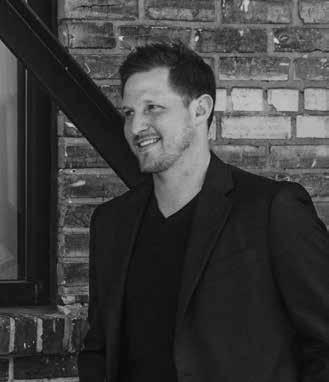
JACOB ZIKMUND is an architect based in St. Paul, Minnesota. After studying architecture, Jacob has worked in the industry for more than 10 years and launched his architecture practice in 2019. Throughout his career, Jacob has started multiple companies where his distinctive style and creative concepts have influenced how people rethink urban living and furniture design.
ZIKMUND’s design aesthetic is modern and simple in form, drawing from his agrarian roots and Finnish heritage, where life is straightforward. You work hard and enjoy the simple things.

Cedar scents the air as sweat pours from my face. I’m in northern Minnesota, and though it’s the middle of winter, I’m hardly dressed. The light is dim, but my eyes scan the wall and read a faded note.
In a small room, hardly bigger than a closet, I sit on a bench. A stove pumps out heat nearby. I draw up water from a simple pine bucket using a hand-carved wooden spoon and pour it over coals that cluster on top of the stove.
Steam fills the air and my muscles relax as I enjoy the Finnish tradition of taking a sauna.
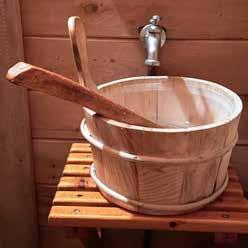
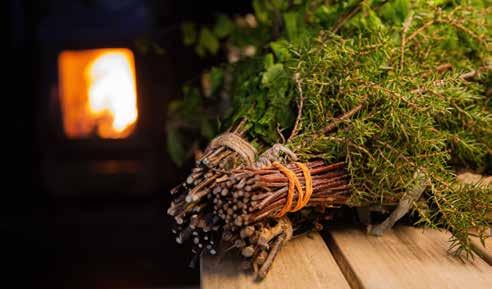
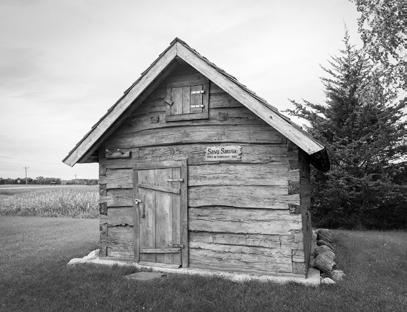
The Finnish sauna has been deeply ingrained into my winter experience. Long before my Scandinavian ancestors came to America, people in the old country were well steeped in the tradition of using a sauna for hygiene and comfort in the winter.
The oldest Finnish saunas were originally made as pits in the ground. Heated with hot rocks and covered, they were a place to bathe and commune. Eventually they were built above ground using four walls, a woodstove or heated rocks and a bench nearby. These birch-lined Kiuas, as they were called, have been central to the Finnish national identity for 2,000 years. They’ve been used to heal the sick, for curing meat, and even as a place for childbirth. Those Finns who immigrated west, who made their new homes in Minnesota, brought the tradition with them.
As I sit in the warm silence, my muscles relax from days spent doing hard work in the woods. My mind feels settled. Such a simple thing that a steam bath should restore me so well. I look around, marveling at the basic elements of wood, fire and water that give life. The Finns knew this well and I was benefiting from it now.
Include this uplifting tradition in your experiences this winter. Throughout Minnesota, there is a growing trend of taking a sauna. There are places where you can rent one for an hour and lodges that have them tucked back into the woods for guests. People are discovering that a sauna provides a space to breathe, unwind and be still.
Before you go, here are the steps to experiencing a prope, woodfired Finnish sauna.
• Shower before and after.
• Gather your kindling as well as hardwoods such as oak, maple or birch. Keep extra logs nearby.
• Heat to roughly 80°–110°, which takes about 45 minutes.
• Don a swimsuit — or for the brave, nothing — and grab a towel.
• Choose your seat carefully. The higher up, the hotter.
• Create a steam sauna by throwing water on the rocks, or löyly as they’re called in Finland, which are being heated on the stove.
• Take a break every 5–15 minutes. If you’re near a lake, and a hole has been cut, jump in! It will feel invigorating. Or roll yourself in a snowbank. You’ll experience a rush of endorphins. (Careful; do this at your own risk!)
• Get whisking! Grab a cluster of fresh balsam (winter use) or birch branches (summer use), called vasta, wrap with twine and gently slap your back with them. They’re good for your skin too, increasing blood circulation.
• Finally, keep voices low, avoid controversial subjects and skip bringing in food or drink (though a water bottle is acceptable). The goal is to slow down and relax.
Be sure to be on your best behavior. After all, the sauna is hallowed in Finland, and if you misbehave, the sauna elf, or saunatonttu, will burn it down.
Did you know that in rural Cokato, just west of Minneapolis, stands the oldest sauna in North America? Constructed in 1868, the Barberg–Selvälä–Salmonson sauna stands proud and sturdy, much like the Finnish families who used it.
But its arrival was not without some drama, as others in the Cokato community were unfamiliar with the practice of taking a sauna. Seeing their neighbors cooling off in the evening air, naked, caused controversy. As a result, the issue went to court as neighbors accused the Selvälä family, who owned the sauna, of strange religious practices. Even though the sauna was on private property, it was near major country roads.
The family proved in court that they were upstanding “good Lutherans,” and shared their tradition of using the sauna to bathe. They won the suit and received $40 for the complaints made against them.
They used the compensation to build a bigger sauna.
See It Yourself | 2001 County Rd. 3 SW, Cokato, MN

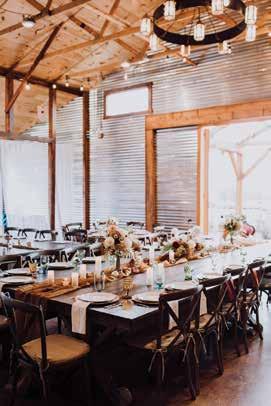



LODGE: SLEEPS 25
VENUE: 300
ACRES: 160
CEREMONY IN THE PINES
DANCE FLOOR + STAGE
HOT TUB
GIANT BONFIRES


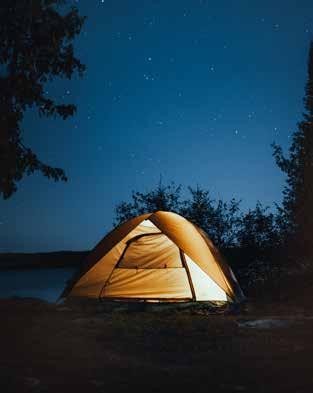
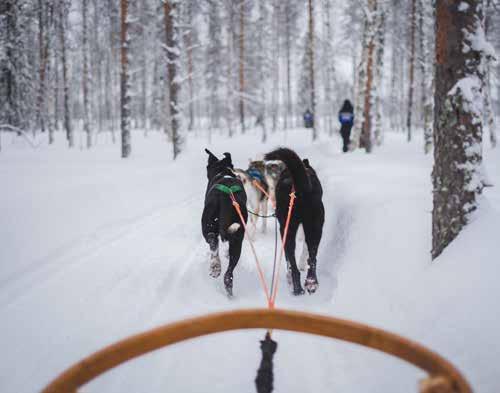



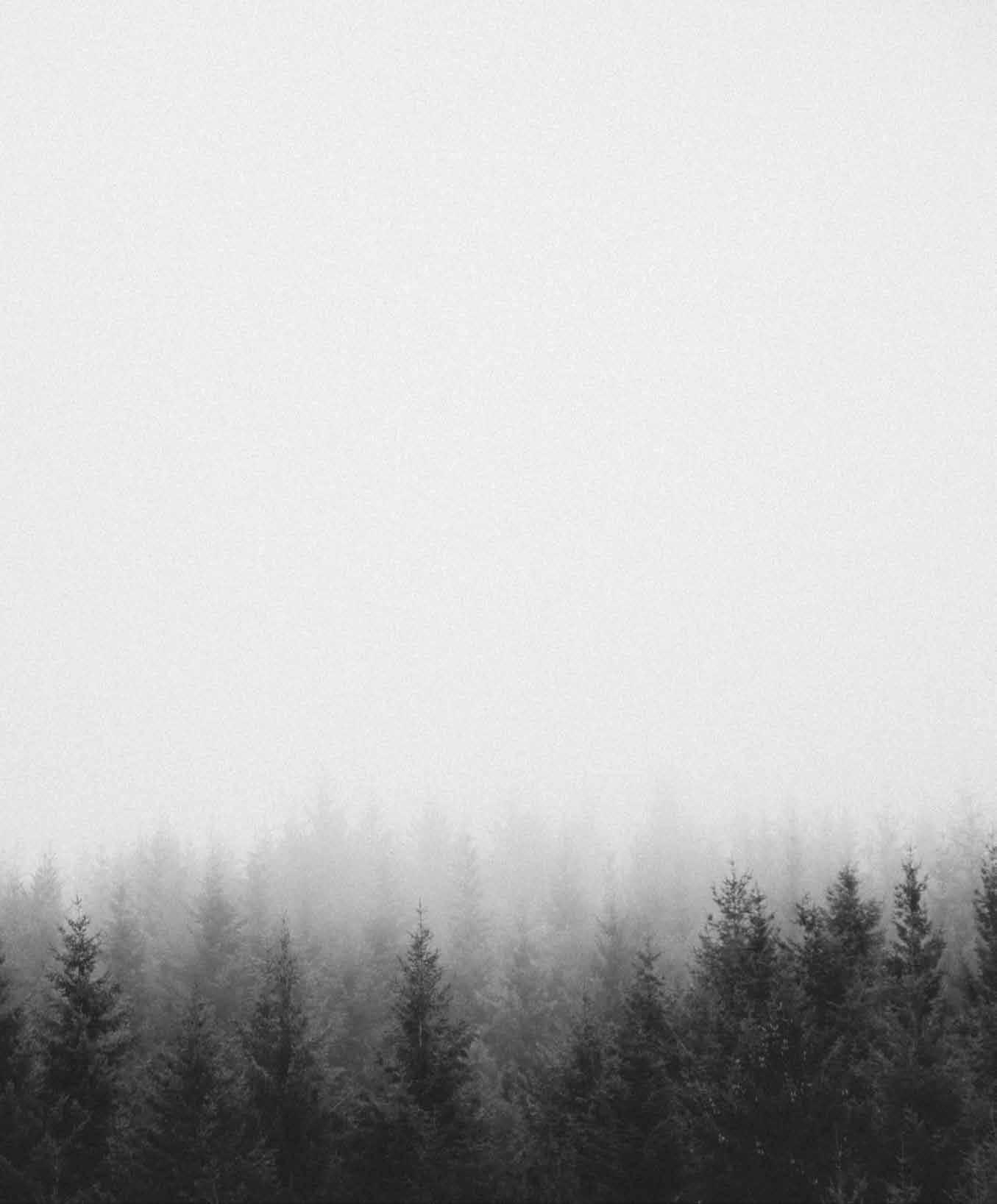
Imagine a character trait so unique that it takes three English words to express it.
Determination. Perseverance. Grit.
The Finnish term “sisu” might best be defined as the extraordinary and indomitable spirit required to never quit and to go beyond all limitations, especially in the face of adversity. But more than a word, it’s a quality that expresses the national character. Hardy and inspiring folks for sure.
Not only a can-do attitude, it’s courage that is present even when success is unlikely. It’s resolutely taking action against the odds. It’s going for it and sticking it out even if you fail — and fail again.
Sound familiar?
Lake and Company and Lovin’ Lake County have partnered to share stories of some adventurers who embody sisu. Whether it be harsh conditions, failed gear, injuries or illness, they fail, try again, repeat and succeed. It’s because of these experiences that they’re inspired to dream bigger and push further in the places they live.
Highlighting eight leaders who continually evoke a deep connection with our land and culture, and exhibit sisu in its truest form.
We hope you’re inspired, and ready to go beyond too.
There are a few places that I pull my drive from. At an early age, I was told by my dad that if I am going to do something, I should do it right. Don’t ever leave anything half done.That motto stuck with me all the way through high school, college and now in my professional career. Also, during my freshman year of college, my advisor told me he would be surprised if I would graduate from college, based on some of my test scores. After that, I was determined to
graduate from college, which I did, and I did it with a great GPA. Finally, I also pull my drive from learning and experiencing new things. Photography has allowed me to see things I never thought were possible. Getting out to capture unique moments has been a major driving force for me lately. I think people really take for granted the world around them.
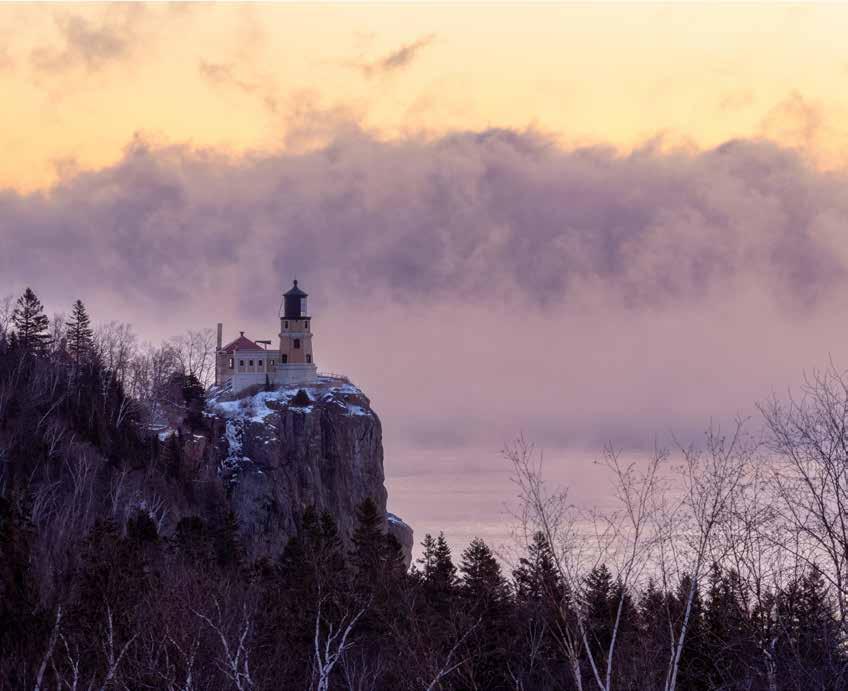
“I DON’T WANT TO HATE WHERE I LIVE FOR SIX MONTHS (SOMETIMES LONGER) OUT OF THE YEAR. WINTER IS REALLY WHEN MINNESOTA SHINES.”
You either embrace it or you hate it. I don’t want to hate where I live for six months (sometimes longer) out of the year. Winter is really when Minnesota shines. The landscape changes daily, which allows for many different opportunities. Also, the days are darker and longer, which allows for more opportunities for an aurora and astrophotography. There is something really invigorating about stepping outside and being hit by fresh cold air and hearing the crunch of snow under your boots.
My dad always said it is easier to take layers off in the winter than put them on. I look back on my childhood and wish I had listened to him earlier. When I head out in the deep freeze, I usually have at least three layers on. When I was in Coldfoot, Alaska, which is north of the Arctic Circle, in 2022, the actual air temperature was -45. That night I had five layers on. I had my face completely covered and my warmest boots on. I was very comfortable all night, but that could have been because we had an amazing aurora display that kept our adrenaline running all night. The only mistake I made that night was that I had photography gloves on, which have the fingertips that fold down. I had folded my tips down and grabbed my tripod without thinking. I frost-burned my fingers. It was the worst pain I had felt in a long time. My fingertips are now really sensitive to the cold, but I bought a glove liner to go under my photography gloves now, so I should be good.
Every day I start off with a cup of coffee, granola, yogurt and fresh fruit. I feel like it is pretty well rounded and it seems to hold for a while. However, if I am looking to really power up, I will have two over-easy eggs, bacon, hash browns, fruit and coffee. This gives me a lot of energy and brings up some of my favorite memories from a restaurant I used to frequent in Northfield, Minnesota, before I moved up to the North Shore.
WHERE IN NORTHERN MINNESOTA DO YOU FIND INSPIRATION?
I find a lot of inspiration in the night sky. When you are sitting along Lake Superior’s shoreline or lying on the ground staring up at the sky, you are really looking back in time. The light that we see took years to reach Earth. I am constantly thinking that these are the same stars that everyone before me saw. I always wonder what they were


thinking about when they were looking at them. Also, when you look up at the stars, you can’t not think about what is out there or what is possible. There are so many stars up there, you have to think anything is possible. After a night of watching the Milky Way glide across the sky or watching the aurora dance, you have to think there are endless possibilities.
Honestly, anywhere in Lake County. The county has everything you could ever want: lakes, waterfalls, wildlife, ATV trails, biking trails, etc. For me it really depends on what I am going out to photograph. If I am looking for grand landscapes, I tend to stick close to Lake Superior and hit up one of the many state parks. If I am chasing the aurora, I will head inland and find a north-facing view to watch the night sky dance.
Split Rock Lighthouse Keeper Hayes Scriven knows a thing or two about Minnesota weather and the moods of Lake Superior. An avid adventurer and astrophotographer, he and his family make their home perched on ancient volcanic rock hundreds of feet above the largest freshwater lake. When he isn’t taking care of the daily needs and preservation of the lighthouse, you can find him somewhere in the northwoods, paddling quiet waters, capturing stunning views or looking north, seeking the aurora.
Website: hscrivenphoto.com
Instagram: @splitrockkeeperhayes
Facebook: Hayes Scriven Photography
[o] Hayes ScrivenOne of the biggest challenges I’ve faced is pre-race jitters. It sounds a bit funny, but on race day I am dry-mouthed and can’t eat. There is a lot of buildup to race day with simply figuring out what layers I’ll need (can we ever trust the forecast?) to my eyes constantly watching my dogs and their every move (eating, trotting, loping, pooping!). The dogs are jacked up and have been rested now for three days straight, which makes for a very, very strong team. My thoughts are making sure I take it easy on the first few legs because the race actually starts up the Gunflint Trail, and we need energy in the bank for the second half of the race. Amazingly, once my snow hook is in place and I am on the trail, I could eat and drink anything and everything. I am on the trail (finally) and life is good. It is very moving once we hear 5, 4, 3, 2, 1!
MY CAN-DO ATTITUDE COMES FROM THE PEOPLE WHO SUPPORT ME, AND OUR DOGS. ANYONE CAN DO ANYTHING WITH SUPPORT.”
When we are in the heavy training stages (starting December, 1) it can be cold and we are usually training our teams with the dogs pulling us on a four-wheeler. Those are cold days but great for training and watching everyone moving. We call it Run/Rest, when we run 20 to 30 miles in the morning, rest four hours and run again 20 to 30 miles in the afternoon. The dogs always want to go; it’s the musher who doubts if “they” can do it, or it’s the musher maybe not wanting to go out again. In the end, there are tails wagging and a few whoop-whoops when we get back into the dog yard. When the intensity in our training is stepped up, that builds great resilience.
My can-do attitude comes from the people who support me, and our dogs. ANYONE CAN DO ANYTHING WITH SUPPORT. The support I get from my husband, Ward, and my two sons, Ian and Ero, is nonstop — from organizing our meat and feed, to cleaning the dog yard, to endless conversations about dogs, training, brushing, feeding (we feed twice a day) and socializing. I am eternally grateful for what we have and what we do with our team.

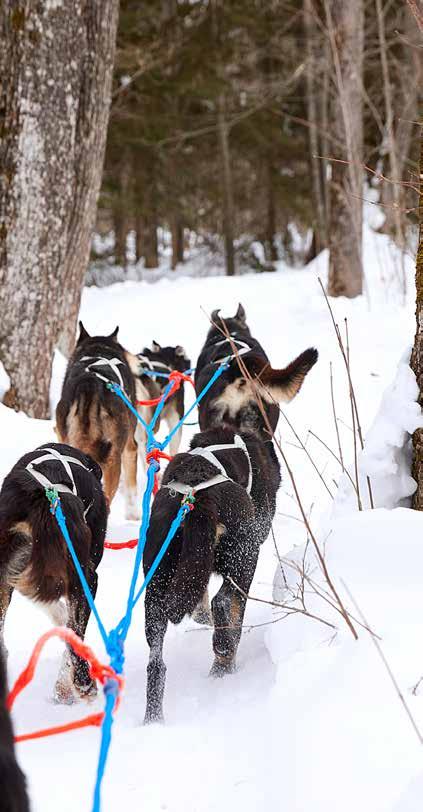
WHAT DO YOU TAP INTO WHEN THE GOING GETS TOUGH?
A giant deep breath and collectively staying calm. (I’ve had lots of practice.) I also am very aware of my surroundings, trail markings and weather. And being prepared, such as knowing where certain items are in my sled that I may need in a tough situation and watching my dogs closely as to who has eaten, how much hydration they’ve had and their movements in harness (gaits). When the entire year of keeping our dogs happy and healthy brings us to race time, the goal is the finish line one checkpoint at a time. The dogs sense when we are scared, mad, sad or defeated, and they also sense (and love) a happy musher who encourages them just like in training. Basically, if a musher is not happy, they’d better fake it till they make it!
HOW DO YOU EMBRACE MINNESOTA WINTERS?
With the right layers of clothing (loose, not tight-fitting), wool socks and good boots, a lightweight but warm parka with a ruff around the hood, snow pants (NOT bibs, for peeing reasons), good mitts and thick cream on my face! Also, the willingness to get up and outdoors any chance I get.
WHAT IS YOUR BREAKFAST OF CHAMPIONS?
On the sled, an insulated cup of coffee, a Nalgene bottle of hot water, a bagel covered in thick butter and peanut butter. I wrap the bagel and put it on top of my Nalgene bottle in an insulated carrier and it stays warm! In my kitchen, coffee, two eggs over easy on seeded bread, and bacon.
WHAT ARE YOUR TIPS FOR BEING COMFORTABLE OUTDOORS THIS WINTER?
You’ve got to WANT to be outdoors. I think if you’re dressed properly and are warm and comfortable you’ll love every minute of being outdoors. Also know that if you do get cold, get moving — go for a little walk; it’s amazing how fast this warms you up.
WHEN DID YOU HAVE TO RECOVER QUICKLY FROM A CHALLENGE?
In 2007, Ward was giving sled dog rides at William Kelley High School. He tied the sled to the top of our truck and jumped down. His wedding ring caught a nail and took his finger completely off. This was just before the John Beargrease Sled Dog Marathon, so much of the preparing and packing was passed onto me. Crazy enough, he raced just three weeks later at the Upper Peninsula 200 Sled Dog Race in Marquette, Michigan.
FAVORITE PIECE OF WINTER CLOTHING? My neck warmer!
My husband, Ward. I am from a family of seven girls and we never camped, let alone winter camped. Ward has taught me everything I know about the outdoors, from starting a fire in the pouring rain to staying warm when it is -35 degrees while winter camping, ice fishing, stream fishing, hunting or canoeing. He has also passed this down to our sons.
DESCRIBE A TIME WHEN THE CONDITIONS AS A MUSHER WEREN’T IDEAL. HOW DID YOU WORK THROUGH THEM?
We’ve seen rain time and time again in December and sometimes in January. It is strange to think you’d need rain gear for a sled dog race, but you really need to have it these days. Also, in low-snow years, it gets a bit crazy not being able to set a snow hook to stop your team.
WHAT ARE YOU AFRAID OF?
• Porcupines, as their quills can be deadly
• Moose, as they do not like to give up the trail, and they travel in deep snow
• Forgetting my water and getting rea lly dehydrated
WHEN DID YOU MAKE A GUTSY DECISION?
We had a dog named Gunnar. He was shy, but a big strong boy. I loved him and he loved me. I thought I saw him limp a bit running between Trail Center and Sky Port during the Beargrease, so my plan was to leave him behind. I do not (nobody does) like to carry a
dog in their sled, so leaving him behind was my decision … UNTIL I was getting ready to leave and Gunnar threw an absolute fit. Barking, crying, chewing, jumping, etc. He looked to me like he was ready to go, so I decided to take him. He never limped once and finished the race strong! Had I needed to carry him, it would have made the team work harder than they needed to.
FAVORITE WAY TO STAY WARM?
Drinking hot water and moving. I like to hold onto my sled with one foot on the runner and move my free leg like I am on a scooter. On the four-wheeler, I do arm circles, situps and lots of stretching.
WHAT ENCOURAGEMENT WOULD YOU GIVE TO THOSE WANTING TO TRY A NEW WINTER ACTIVITY?
Plan well and follow through. Bring a friend, your dog, for sure your camera, and decide to do it and follow through! After you’ve accomplished it, you’ll feel amazing, and this will make you smile.
WHAT WAS YOUR BIGGEST FAILURE AS A MUSHER? HOW DID YOU DEAL WITH IT?
When I did the Beargrease Marathon for the first time, the race route went from Duluth to Grand Portage and back to Duluth. The final leg of the route went right by our home, which also happens to be near the Two Harbors checkpoint, a rest stop for both mushers and dogs. Within the first mile we had to cross over the trail that takes us home.
The dogs continued 20 yards past the trail to our home, but instead of continuing, they came to a screeching, and I mean screeching, halt. I thought the team needed more rest, so instead, I turned them around and we ran swiftly back to the checkpoint. If a musher returns to a checkpoint, they are completely on their own and cannot have any outside assistance. I bedded my team down in straw and it started to rain. I rested the team another five hours there in the rain and made another attempt to run them to the finish line. We took off out of the checkpoint well rested and moving swiftly until … the turn home, and once again they stopped and turned around to look at me as if I had completely lost my marbles (and my way home). I realized that I had not trained them well enough to go past our home trail, and this was their way of letting me know. This was my one and only incomplete finish from the Beargrease, and it taught me a very valuable training lesson. I was soaking wet, it was around 33 degrees and the conditions were awful.
WHEN DO YOU FEEL THE STRONGEST?
Arriving at a checkpoint with a good steady run behind us. It is very moving.
WHERE IN NORTHERN MINNESOTA DO YOU FIND INSPIRATION?
Outdoors in the woods, around a fire, in our bunkhouse, with my family, on my bicycle and in my garden, no matter what season we are in.

Having participated in the John Beargrease Sled Dog Marathon for nearly 30 years, Colleen and her dogs are part of the top teams. In 2022, she came in third, starting just north of Duluth and finishing at Grand Portage 400 miles later. She started as a volunteer in 1993 and has been hooked ever since. She and her husband, Ward, also a musher, make their home with 31 furry friends at Silver Creek Sled Dogs outside of Two Harbors.
Website: beargrease.com
Instagram: @Colleen_Wallin



Some people think the summer would be the season for surfing on Lake Superior, but actually the opposite is true. Winter, fall and spring bring the best waves for surfing, as the stronger winds and storms move the cold, dense air to make bigger waves. I gear up with a wetsuit, boots and gloves and get ready for the surf season in Duluth.
When I was a high school teacher, one bonus of the job was that the snow days were often a result of the biggest storms producing the best waves, so I’d get to go surf as long as I could dig out my car and get down the hill to the lake.
Last winter we surfed into the slushy season, and I think the slush in the water made the waves better; it helped reduce the chop on the water and made a cleaner wave face. It was a strange feeling, though, paddling through the slush. It felt like I was in a giant Icee machine.

You need the right gear. It is a requirement for surfing on the lake safely. I find myself making frequent wetsuit repairs to help keep the cold water out. Randy Carlson, outdoor program coordinator at the University of Minnesota Duluth, also taught me the trick of bringing a thermos of hot water to pour into my wetsuit or boots on a cold day. The Back Alley is a surf and coffee shop in Duluth where you can get gear, and you can sometimes find used wetsuits at Duluth Gear Exchange as well. There was a really cold session a couple of years ago — I tried staying warm by powering a kerosene heater next to my car. It worked! I was able to warm up pretty quickly next to the 80,000 BTU heater.
IF YOU CAN FIND ONE OR MORE PEOPLE TO HELP YOU GET PAST ANY HURDLES YOU’LL INEVITABLY ENCOUNTER, THAT CAN MAKE THE DIFFERENCE TO KEEP YOU PARTICIPATING AND LEARNING.”
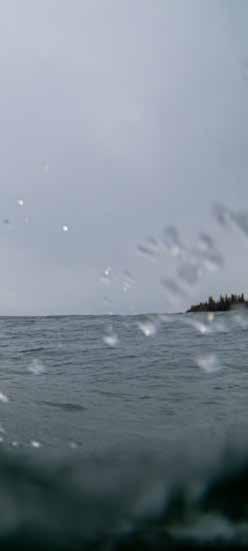

Go for it. Look for some people who are doing that activity and ask them how to get started. If you can find one or more people to help you get past any hurdles you’ll inevitably encounter, that can make the difference to keep you participating and learning. When I first started surfing, some local surfers saw me struggling to catch waves, and after a couple of days, they started giving me some tips. That encouragement and advice helped me overcome the obstacle of getting started, and then I had a group of friends to support me as we surfed together.

Paul Schonfeld is an educator and a Lake Superior surfer living in Duluth, Minnesota. As a high school physics and computer science teacher, he often taught students about upcoming storms to highlight the physics of waves and computer simulation tools for making wave predictions. Schonfeld now works for the Northern Lights Collaborative for Computing Education, an organization within the University of Minnesota focused on developing evidence-based programs and resources that support inclusive computing education. In the role of district support coordinator, Schonfeld works closely with northern Minnesota school districts to help build equitable and sustainable K–12 computer science pathways. He has surfed in Duluth since 2013.
Instagram: @paulschonfeld
WHAT IS ONE OF THE BIGGEST CHALLENGES YOU’VE FACED AS A WINTER CAMPER?
It has to be the cold. My husband purchased a canvas tent and titanium stove after years of cold camping (him, not me). He had all the gear, and as a “trip leader,” he eased my way into winter camping and made it enjoyable. Dressing in layers of merino wool is key. And changing them immediately if you start to sweat.
WHAT DO YOU TAP INTO WHEN THE GOING IS TOUGH?
When things are tough, I move. Staying warm is key. Warmth and chocolate.
HOW DO YOU EMBRACE MINNESOTA WINTERS?
It’s not bad weather, only bad gear or clothing. Dressing in layers. A hat and scarf are a must. Just having my head and face protected is key to staying warm.
WHO IS YOUR OUTDOOR HERO?
Emily Ford! To walk along the Wisconsin Ice Age Trail in the winter and also across the BWCA in winter … watching her movies and knowing her personally are very inspirational.

WHEN THINGS ARE TOUGH, I MOVE. STAYING WARM IS KEY. WARMTH AND CHOCOLATE.”



WHAT’S YOUR BREAKFAST OF CHAMPIONS?
We make breakfast burritos filled with all kinds of goodies ahead of time and wrap them in foil. At camp we put them on the stove to heat up and melt the cheese. It’s fatty goodness, which you need to stay warm outside in the winter. Lots of calories!
WHEN WAS A TIME YOU HAD TO MAKE A GUTSY DECISION?
There are times when you have to be ready to call off a trip no matter how much planning you put into it. High winds, blizzard conditions and way-below-zero temps are enough for us to call off a trip.
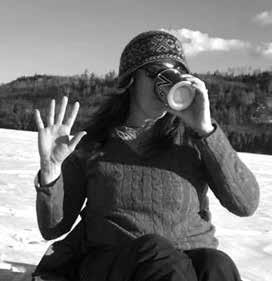
Molly moved to Duluth with her fiancé, now husband, 27 years ago. They have one 23-year-old son and love to do all things outdoors: canoeing, camping (including winter camping), mountain biking, hiking, kayaking and fishing. They have an off-thegrid, remote-access cabin on Lake Vermilion.
Instagram: @mollyasolberg
[o] Molly Solberg [o] Molly SolbergJuggling a job as a finance executive, being a mom and having other interests can be challenging as an ultra-endurance athlete. It’s also my lifeblood. I have to make choices on how I spend my time, and training is never hard to choose. I typically spend less time on gear, routes, nutrition and other areas. I wish I had more discipline in these areas, but I also feel like focusing on training my body and mind has served me well.
For me, building resilience is an equation of consistent exposure to challenging circumstances and having the right mindset. Many people put their attention outward, looking for answers to improve their performance. But at the end of the day, none of that matters if you don’t have a strong mind and aren’t willing to get uncomfortable out there. I was born with a strong mind, full of stubborn determination to conquer anything I put my mind to. But winter ultras or other extreme events are something else. You really have to gain experience and practice using your mind to manipulate your performance. Also, these types of races have provided significant growth opportunities for me in my personal life.
I always practice gratitude when I’m on the trail. No matter what the circumstance, I focus on my privilege to be there. I made the choice to be at the event. I have the health and financial means to be there. There are only so many people who are accepted into these events. So when things are tough, I think about this. I think about how few people get to experience the beauty of this solitude. So few people get to experience the natural hallucinations from fatigue, sleep deprivation and hunger from pushing your body for hours and days on end in the cold. There is no drug or simulation to experience how tough these events actually are. So I go in expecting it to be hard, expecting the weather to be bad, expecting something or everything to hurt. But having a toolkit of mindfulness to break through those walls of hard when they come is a game-changer. Positive mantras, smiling, lifting up other racers, thanking volunteers are all ways to get through the tough times. For me, at the foundation of it all is gratitude. I feel it’s my responsibility to respect and honor the opportunity to be there.
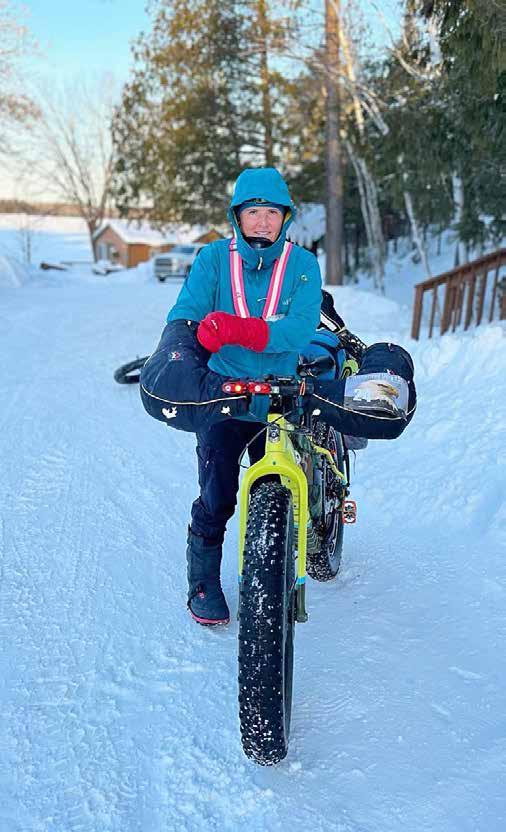

DESCRIBE A TIME WHEN RACING CONDITIONS
WEREN’T IDEAL (LIKE THE WEATHER). HOW DID YOU WORK THROUGH THEM?
In winter ultras, the experienced racers approach every race expecting conditions not to be ideal. Therefore, the challenge of the weather and conditions becomes the standard. My first Arrowhead 153 race was ridiculously warm. It was almost impossible to bike in those conditions, and I was complaining about walking in a bike race. A fellow racer gave me some tough feedback on that and since then those challenges are what I look forward to. Everyone is experiencing the same conditions. It would be boring without challenging weather. None of my 10 trips on the Arrowhead Trail have been the same, because of weather. That’s what makes it so exciting.
WHEN HAVE YOU MADE A GUTSY DECISION?
Some might consider this stupid rather than gutsy. In 2020 on the human-powered version of the Iditarod (I was biking), I had left Puntilla Lake (mile 150) for Rainy Pass around 1 or 2 a.m. after zero sleep for three days on trail. I had lost my GPS navigation at mile 100 and had been getting crushed by high winds, blowing snow and up to 12 feet of fresh snow in the prior two weeks, making traveling pretty rough. I tried to rest at Puntilla Lake at Rainy Pass Lodge but grew restless and set off for the pass. This is the major mountain pass from the inland of the Alaska Range to the west side of the state and toward Nome. It’s a 15-mile slow climb to the top of the pass with several opportunities to end up nowhere, especially in a windstorm. That same year, one man ended up 30 miles

IT WAS DARK, IT WAS LOUD, IT WAS COLD AND CHAOTIC, I HAD NO NAVIGATION, AND YET I COULDN’T RESIST. I CONTINUED PUSHING, MARCHING MY BIKE FORWARD.”
off course at Hell’s Gate, a very rare alternate route. It was snowed in and he was not aware he was lost until he came upon a hunter who used a satellite phone to call a rescue. I left the lodge after midnight, only minutes before two other men from Alaska, who were sharing fourth and sixth place with me for much of the last two days. They had slept more and passed by me, riding while I had already begun the death march due to high winds and low visibility. I couldn’t see any snowmobile tracks — if even there — since the wind was blowing the fresh snow all around. At times I had to turn my back to the wind and brace my bike because the wind gusts were so forceful that I could barely stand upright. I was incredibly nervous with no GPS navigation visibility. Their riding, while slow, was impressive. Minutes later I saw lights coming down the mountain toward me. They stopped to tell me they were not comfortable with these conditions and were turning around to wait out the storm at the lodge. The weather was so chaotic. I stood there watching the wind at their backs as they were pushed down the mountainside. I gave it a moment to consider my choice. The advice I was given was never go over Rainy Pass in the dark, alone or in bad weather. I was terrified and wondered if it was stupid, possibly heading into nowhere in the Alaska Range. It was dark, it was loud, it was cold and chaotic, I had no navigation, and yet I couldn’t resist. I continued pushing, marching my bike forward. Hours and hours later, when the sun came out, the weather died down. I hoped I was heading in the right direction. Now I could follow snowmobile tracks and was at a higher elevation. The mountain grew steeper and I saw the summit sign in the distance. Success! I couldn’t believe it. I was so incredibly tired and also confused. I thought there would be something to help me there. Confusion is a normal part of the events. It was now a bluebird
day, and then I had to get to Rohn, which had a tent and my supplies that were dropped in by snow plane. While the exit from the pass was sunny and calm, it’s also terribly scary since you have to bob and weave across a river with sometimes little to no bank, little snow bridges over running water, and many tales or legends of racers in years past who have fallen through into the river. I was so tired but stayed focused and channeled the fear into pacing to Rohn. I did arrive late that afternoon before the temps reached -30 degrees and was greeted by three amazing volunteers, a canvas tent with a bed of hay, recovery food and a great story after the trek over the pass in a storm.
WHAT’S YOUR FAVORITE WAY TO STAY WARM?
Move! Every year, either in winter or even non-winter ultras, I hear of many people quitting a race because they were cold. And the cold usually comes after they have stopped and claim they are wet with sweat — “if you sweat, you die” is what we say. I am usually so drenched I have an ice neck and my insides are dripping with sweat. Yes, sweat and cold can be dangerous. You need the right gear (so go try differ ent gear, make sure it breathes and layer up). But when I’m cold, I move. When I stop, I know I have a minute or two before I will get too cold. When I start moving again, it can take up to 30 minutes to feel warm again — you have to trust you will eventually get there. You have to be comfortable. You might be “cold” but not dangerously cold. I always carry a dry base layer to change into if needed. If you have an emergency on the trail, the first thing you should do is get on a dry base layer and eat something, and then move. Make sure you are hydrated and fueled. Dehydration and hunger lower your body tempera ture. You can do jumping jacks or push-ups to get warm. Do not stand still. Just get moving.
A finance executive and mom of a 5-year-old, Kate Coward is passionate about pushing physical and mental limits. She learned about the Arrowhead 135 and immediately wanted to be a part of it. This is an ultra-endurance race in International Falls, Minnesota. It’s self-supported, meaning racers have to carry all their equipment and supplies for the duration of the race, including food, water and shelter. Two months before the event she convinced the race director she was good for it. Buying a fatbike, she arrived at the Arrowhead start line a few weeks later. She has won for bike and ski, including a course record, and also completed all 270 miles on foot twice in one shot — once while pregnant in 2018.
Instagram: @kate_coward_athlete


All of us at Lake and Company are passionately commited to celebrating the very best of lake culture and inspiring out communities to get out and explore the unknown.

Our readers are a uent and educated residents that appreciate lifestyle and culture of the north. Lake and Company magazine is a women-owned, award winning, independent magazine and shop with a midwest reach.
Join our community of like-minded individuals. Well-traveled risk takers. Adventure seekers. Out-of-the-box thinkers. Innovators. Entrepreneurs. The networking and collaboration opportunities are all part of the package.
Embrace the spirit of adventure and entrepreneurship by joining Lake and Company family and owning your own retail store or magazine. Dive into a rewarding business opportunity that aligns with your passion for nature.
We provide stories of people doing exceptional things that help support adventure, innovation, conservation and community. FIND US AT





THERE WAS A TIME WHILE SURFING IN THE GREAT LAKES WHEN I WAS STUCK IN A CURRENT. I GOT THROUGH IT BY STAYING CALM AND WENT WITH THE FLOW OF THE CURRENT AND CHOSE A DIFFERENT EXIT STRATEGY.”

WHAT IS ONE OF THE BIGGEST CHALLENGES YOU’VE FACED AS A WINTER SURFER?
Winter challenges include staying warm. Having the correct equipment is very important. 80% preparation, 20% skill.
WHAT ARE SOME WAYS YOU BUILD RESILIENCE?
Learn from your failures and mistakes. Come back with a better plan or strategy.
WHAT DO YOU TAP INTO WHEN THE GOING IS TOUGH?
My mental confidence and physical strength.
WHEN DO YOU FEEL THE STRONGEST?
After a workout or a surf.
WHAT ENCOURAGEMENT WOULD YOU GIVE TO THOSE WANTING TO TRY A NEW WINTER ACTIVITY?
Set attainable goals and also set goals that you know you will not achieve today but sometime in the near future.
FAVORITE MOTTO TO LIVE BY?
Treat others how you wish to be treated.
WHAT’S YOUR BREAKFAST OF CHAMPIONS?
Bulletproof coffee.
WHAT ARE YOUR TIPS FOR BEING COMFORTABLE OUTDOORS THIS WINTER?
Do the training beforehand. Be fit and eat well.
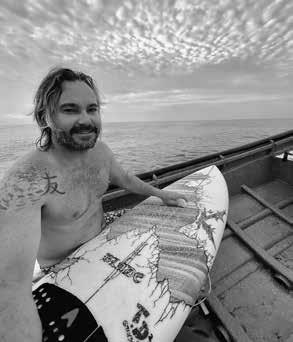
FAVORITE PIECE OF WINTER CLOTHING?
My Matuse wetsuits.
WHO IS YOUR OUTDOOR HERO?
Anyone who commits and sticks to the program.
WHERE DOES THE CAN-DO ATTITUDE COME FROM? It comes from being self-motivated.
WHAT ARE YOU AFRAID OF?
I’m afraid of not being able to do the things I love doing on a daily basis.
FAVORITE WAY TO STAY WARM?
Spending time in front of a nice fire with some delicious comfort food.
HOW DID YOU DEAL WITH ONE OF YOUR BIGGEST FAILURES AS A WINTER SURFER?
Come back the next day and try again. It’s important to have grit and motivation.
DESCRIBE A TIME WHEN CONDITIONS AS A WINTER SURFER WEREN’T IDEAL (LIKE THE WEATHER). HOW DID YOU WORK THROUGH THEM?
There was a time while surfing in the Great Lakes when I was stuck in a current. I got through it by staying calm and went with the flow of the current and chose a different exit strategy.
Jamie Sterling was born and raised in Hawaii, specifically the North Shore of Oahu. The ocean is in his DNA. A professional big-wave surfer since the age of 16, Jamie is passionate, committed and devoted to the sport of surfing. Not only does he know the ocean, he understands it. The understanding is what allows him to show others its beauty. Thanks to some epic storms that hit the Great Lakes region, he has also surfed the big waves of Lake Superior along the North Shore.
Website: jamiesterling.com
Instagram: @jamie.sterling
Heading out into the vast open waters of Lake Superior with an unknown crop of people in a small sailboat can be a daunting prospect. We offer two-hour day sails for part of the summer, but most of the time we are doing what we love most, and what is in great demand — multi-day trips, where we wait out bad weather, sleep and eat aboard, teach navigation classes, hike and kayak as well as sail together. The full package demands a real investment in relationships; for the most part, people willing to invest their time, money and energy into such a trip are a great fit for the experience, with both shortand long-term rewards attached to it. We have made more lifelong friends on our boat than in any other setting. We have also helped numerous individuals and couples get started on their own nautical journeys, whether they be sailing, buying a boat, or learning to sail or live on their own boat.
Rewarding as it is, the challenges are also constant; it is not a livelihood for the fainthearted. Lake Superior is arguably the coldest place in the U.S. in May and warms gradually. It can be chilly even in September when the water is at its warmest. At no time is it appropriate to skip wool socks and a stocking cap on the gear list, even in summer. If you are not warm, it is impossible to have fun, and seasickness is exacerbated by cold too. We must keep people warm and fed, engaged and learning, and managing their own discomforts responsibly and consistently. Our confidence in facing these challenges comes from the solid foundation we have laid, one that took years to develop, starting with the boat itself. We bought our 40-foot steel sailboat, Amicus II, 13 years ago and have put untold hours into its maintenance and improvement. We could never take people sailing in a boat that felt unequal to the conditions that Lake Superior brings us. Amicus II could sail anywhere in the world, and that is what we need for the wind, waves and currents of Lake Superior in the spring, summer and fall.


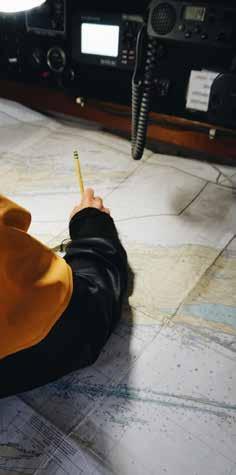

WE HAVE HONED OUR SKILLS THROUGH EXPERIENCE. THERE IS NO OTHER WAY. STEERING A TIGHT COURSE THROUGH ROUGH WATER COMES ONLY FROM HOURS AT THE WHEEL.”
We have honed our skills through experience. There is no other way. Steering a tight course through rough water comes only from hours at the wheel. You cannot learn how to chart your position from a screen. You cannot learn to gauge the appropriate sail combination, or get comfortable with a certain degree of boat heel, or learn to make a one-pot dinner for six people in a rocking galley in any way except by actually doing it. Mark is the captain and has both the responsibility and the freedom to make the important navigational decisions as he sees fit. His decades of sailing on Lake Superior have made him a sought-after and trusted captain in heart-clenching conditions. I am in charge of the participants — their comfort, their learning, their needs and desires. We have a system down that works for us and that seems to work well for participants, as there is always more clamoring for trips!
In the wintertime, everything changes. The world is so different, it’s hard to remember it’s the same world. Wind gives way to deep silence. It stays dark late in the morning and gets dark again by late afternoon; using the daylight and being ready for darkness to descend is a constant. The challenges of snowshoeing in the winter include ensuring participant preparedness and keeping people warm, understanding ice, being prepared for falling through the ice on the rivers, and of course feeding and socializing with those with whom we snowshoe or hike up the river gorges of the North Shore. Though it’s a different season, it is still the same gorgeous place, and in both summer and winter we never tire of sharing our beautiful region and its place on the planet. Some people love winter and some tolerate it, but everyone agrees that the most viable way to live through a northern winter is to be out in it. To get the blood pumping, to breathe the cold, empty air, and to see, hear and feel the details surrounding you — that is the experience of winter.
Winter is an intimate time, and carries intimate pleasures. Rivers are different from each other, with shifting ice patterns and currents. Ice heavily laden with snow is completely different from exposed, sometimes blue or green or brown, ice. Skies above tend to show just a thin layer of sunlight, with occasional days of sparkling blue skies. Participants on our trips are prepared to feel awe in the river gorges, and they always do, whether it’s the massive ice falls or the multilayered rocks or the lonely otter sliding into the open water that wows them.
This region of the world is stark, remote and worthy of all efforts to embrace it. The saying “There is no bad weather, only inappropriate clothing” is a common one here. The people who make this region their home know this and are proud of their closeness to nature, day and night. In fact, the night sky, which is as clear as anywhere in the country, is breathtaking, with or without northern lights or a glowing moon. Properly prepared, virtually anyone who loves the outdoors will enjoy being immersed in it for an appropriate length of time, and return feeling peaceful, humble and ready to warm their cold fingers with a mug of hot soup.

Katya Gordon is a writer, radio show host, sailor, small-business owner, climate teacher and piano teacher. Owners of both Amicus Adventure Sailing and Sea Change Expeditions, she and her husband, Mark, take people sailing in the summer and snowshoeing in the winter, all along the North Shore of Lake Superior, which is their home and where they raised their two daughters.
Website: amicusadventuresailing.com
Facebook: Amicus Adventure Sailing
Instagram: @amicusadventuresailing
[o] Amicus Adventure Sailing
I’m not afraid of death; at least I don’t think I am. What I am afraid of is not living while I’m alive. There’s existing, and there’s living. To me, existing is going through the motions, getting by, being there but not making a difference. Living is doing more, going further, being a better person, helping those in need, giving back, being a role model, pushing yourself, being the best father, husband and son that you can. Some days, I feel I’m existing, and others I feel I’m living. I’m afraid of not living 100% of my days.
Find ways to push yourself. Hate running? Sign up for a marathon. Hate the cold? Go winter camping when it’s –40 degrees. So many challenges and roadblocks in life are just mental barriers set up by your own domain. Push yourself daily. Help others. It’s a crazy and chaotic world out there these days, but where we live, “Up North,” is a special place. People are kind, life moves slower. Take the time to appreciate what is around you and find beauty in the small things — in nature, in people, in the moments — and live happy.

My father recently passed away, in July 2023. It was unexpected and impacted me greatly in ways I still don’t fully comprehend. Death teaches you a few things, namely that tomorrow is never guaranteed, so live today to the fullest. Go on that adventure, take that chance, act spontaneously because — you know what? — that opportunity may not be there tomorrow. I’ve been fortunate enough to make the outdoors my office and do some pretty incredible things, and let me tell you, Northern Minnesota and beyond is truly special. Whatever you want to experience from an outdoors perspective, you can do that here. It really helps enable you to live today to the fullest. Everything is out there waiting for you. All you have to do is insert yourself.
I have had the opportunity of meeting a lot of people through the outdoors and within the outdoors industry. Someone who stands out is a person I am lucky enough to call a friend, and his name is David Jackson. Although David technically has a house, he doesn’t live in it. He lives in his sleeping bag. I don’t know the exact number, but I would guess David spends over 280 days a year sleeping outside. He lives a life I think we could all aspire to, mainly a life of simplicity, gratitude and exploration.
He does missions that I can only describe as modern-day Christopher Columbus-like. David travels by snowshoe or canoe on one- to fivemonth trips so much that the majority of my communication with him comes via Garmin inReach. David is humble, which is probably my favorite trait about him. He is a world-class photographer and an even better writer/storyteller. David has given me inspiration — inspiration to go further, explore, take photos and live. Live as each day could be your last.
MINNESOTA WINTERS?
The way I see it is, you have three options. Curl up next to the woodstove until May, go to Florida, or buck up and go outside. I like option number 3. Winter is only cold if you stop moving. Grab a pair of skis, snowshoes, ice skates, hiking boots and just go for it. Winter is absolutely the most magical time of the year in Northern Minnesota. The purity, the silence, the beauty. There is sooooo much to do if you embrace the cold and get used to it. My favorite days are the –35 to –40-degree ones. Typically with those temps, you have clear skies and no wind. Talk about picture perfect. Everything is tranquil.

My name is Grant Sorensen. I am a self-employed 33-year-old living in Duluth, Minnesota, with my wife, our two kids and our Newfoundland dog. Living in Duluth gives us the best of both worlds: a sizable city, which is beneficial for family life and child development, and all the outdoor escapes and adventures one could ever dream of. I own a few businesses, all of which have to do with the outdoors and storytelling, namely Superior Angling Company, Cold Water Creations, and Field and Flame. I am also involved with a local nonprofit, as giving back and helping others is embedded deep in my heart. Highlighting the beauty of our area is what I love to do; storytelling is what I was born to do.
The trees crack from the cold. The northern lights glisten. You can hear your own heartbeat. Everyone else is inside not daring to go out. You have the whole top half of the state to yourself. How could that be any better?
WHERE SHOULD WE BE ADVENTURING THIS WINTER IN LAKE COUNTY?
Isabella is a cool area, no matter what you like to do. Snowmobile, ice fish, snowshoe, stargaze, winter camp. You can truly do it all. It is big wilderness, and my favorite part is that it’s all public land, the majority of its 2,109 square miles. It’s unheard of, especially in other states and areas of Minnesota, where the majority of the land is private.
The Minnesota DNR does a great job of stocking trout in lakes up in this area for anglers to catch, and the naturally reproducing walleye populations are healthy. Snowmobile trails are plentiful, and most years there’s enough snow for even the most experienced riders who like to play in the powder. Isabella is truly an outdoor enthusiasts’ playground.
DESCRIBE A TIME WHEN CONDITIONS AS A FISHERMAN/ OUTDOOR STORYTELLER WEREN’T IDEAL. HOW DID YOU WORK THROUGH THEM?
I found out that it is nearly impossible to ice fish outside with a rod and reel when it’s –43 or colder. Everything freezes, and by the time you scoop the ice out of your hole and put down your ice scooper, it’s time to scoop the ice out again. I never fish inside an ice house. It’s rare. Very rare. Fishing in an ice house with a heater makes you lazy and takes away from the experience, in my mind. So what do we do? We put down the rods and reels, and use tip-ups. Tip-ups are designed to have the spool of line down in the water, so it can’t freeze. And they work excellent in –43 temps. And yes, trout bite the best when it’s numbingly cold outside.
“Aabijijiwan/Ukeyat yanalleh,” which translates to “It Flows Continuously” in Ojibwe and Houma, is a collaborative exhibition by multimedia artists Karen Goulet (who is Ojibwe) and Monique Verdin (who is Houma).
These two artists are bound by a common river, the Mississippi, or Misi-ziibi (“Big River” in Ojibwe), originating in the north and remembered as Misha sipokni (“Older Than Time” in Chahta) in the coastal territories of the southern Delta, where the bayous of Turtle Island meet the sea. Goulet and Verdin use sculpture, textiles, photographs, collages and video to illuminate the myriad aspects that connect personal memories and curiosities, seasonal rituals, and the witnessing of the changes inherent in the complex tapestry of Indigenous and colonial histories interwoven within the watershed they both inhabit.


1. How did you meet and what made you decide to do a project like this?
KG: We were selected as pilot artists for The Big River Continuum Project. We were to explore and determine what a Northern-Southern Misi-ziibi relationship could be through art, science and environmental focus. These are all significant perspectives to a project around water. As two Indigenous women, we have cultural perspectives that became central to the dialogue as we got to know each other and spend time in each other’s communities. We are both part of cultures defined by our relationship to water. (Our Ojibwe migration story is about traveling to where the food grows on water, which is the manoomin.) Sisterhood and community have always been part of water and environmental stewardship. We are just doing our work.

MV: The University of Minnesota’s biological field station at Lake Itasca partnered with Tulane University ByWater Institute’s environmental art residency, A Studio in the Woods, to pilot a Big River Exchange, which started in the fall of 2019, when I went north to the so-called headwaters of the Mississippi. We have been in conversation and community and collaboration ever since. As two Indigenous women at opposite ends of the same river, we have been learning a lot about the watershed and investigating silenced stories and invisible connections that flow from the northwoods to the bottomlands of the Mississippi River Delta to the Gulf of Mexico.
2. What are the collaborative pieces in the exhibition that demonstrate how you both collaborated on the project?
KG: I will add information to what Monique has provided. We have collaborated with each other and others through this project in beautiful and meaningful ways. I think we influence and respond to each other’s work, which organically evolves the exhibit. As we move forward with our individual work in our homelands, we are influenced by current events, and this influences what we bring to the project. Leaning heavily into the moving-water metaphor, this exhibit is not a repeat of previous locations but part of an evolving story that considers where we will be exhibiting and encourages and includes the voices of the community. I love this so much. How we will continue is not predictable or a given.
MV: The burying of fabrics along the watershed has felt both ritualistic and like a data collection experiment. We have been learning from each other, sharing our histories, stories and communities. Another sweet collaboration that I think exemplifies how our work together is reactivating tradeways has been connecting Dr. Tammy Greer (Houma) and her native plant–dyed fabrics to Karen’s star quilt work. The ReIndigenized Map of the Mississippi River is a reflection of Karen’s and my inquiry and wonder regarding what the stars might see as they look down at the Mississippi.
WATER IS LIFE, AND THE MISSISSIPPI IS A FORCE OF NATURE THAT WE BELONG TO AND ARE RESPONSIBLE TO CARE FOR”
3. In doing this project, what have you learned is similar about the way you/your community connects to the river and what is different from one another?
KG: We are part of water cultures and understand the urgency of addressing environmental concerns that are impacting cultural practices and life on the planet. Anishinaabe people have always had ceremonies that honor the water. We bring these to our activism and daily life. Growing up in places where water was clean and accessible was normal for me. Learning about Houma history and the struggles they have faced with oil industry pollution, the health impact and land loss, was stunning. We are in the beginning of that battle up here comparably. I admire the Houma’s adaptability to and survival of all this. I appreciated the people, their cuisine and landscape, even though I couldn’t swim. I am always happy to share our manoomin, foraged and hunted foods, and fish.
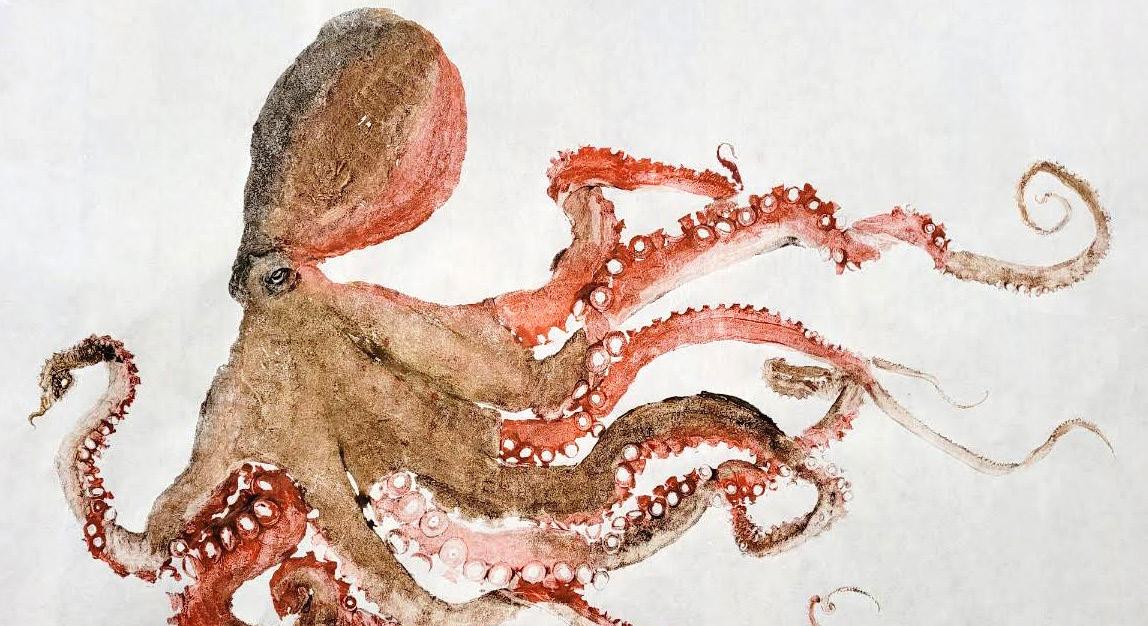
MV: To be honest, I don’t think most people in the Delta really know where the Mississippi River “begins.” Of course, that is a debatable topic. Our communities are defined by our relationships with the watershed, especially in regard to how our sovereignty and survival have been and will continue to be dependent upon food security. The legacies of migration, adaptation and extraction look different, but they are all rooted to the same origins challenging contemporary realities. Our differences are our foodways as we are a brackish/fresh/saltwater peoples who live by the tides, eating lots of seafood and Anishinaabe folks are connected to wild rice harvesting and berries and deer. At the end of the Mississippi River, there is a stretch between Baton Rouge and the Gulf of Mexico that is referred to as Cancer Alley, a name that comes from having quite the reputation of cancer clusters near the many, many petrochemical refineries and facilities that line the banks of the Great River. We have been disconnected from the river by levees and industry and do not have the same kind of access recreating or simply just being able to be on the river, due to the dangers of having massive ships in the channel and the port system occupying the banks. It has been a real gift to experience the river in a different way in Minnesota, and though it is different, I still feel like the Mississippi of the north is as familiar as the Mississippi of my homelands and waters.
What would you like audiences/visitors to take away from the exhibition?
KG: Possibility and concern, which generates inspiration to action. I think we need to honor the path each of us takes, and the role we play in healing, celebrating and protecting the waterways we belong to. It is a vast watershed that reaches so many different places and people. How they experience it can be similar and yet so different. When I was in the West Delta and watching the power of the Misi-ziibi as it neared the ocean, I realized that it would continue no matter what humans do. It is waiting to see if we will figure things out to survive. It will be there with or without us. I also hope the love and commitment we have to our Misi-ziibi is well expressed.
MV: Water is Life, and the Mississippi is a force of Nature that we belong to and are responsible to care for. Coastal land loss in south Louisiana may feel like a kind of “down there, those people” problem, but we are all feeling the effects of planetary change and the consequences of the industrial revolution. In order for things to be healthy in Minnesota, we need the Delta to be able to do its job to purify water for the cycles and seasons, and vice versa. In 2023, the United States Supreme Court changed the Clean Water Act, removing the protection of wetlands that lack a continuous surface connection to a larger body of water, including many millions of acres of wetlands and waters that connect underground. Spending time in Minnesota, I have come to appreciate the wetlands of the north as mirrors to the coastal Delta wetlands of the south, relatives and interdependent ecosystems bound by the same river.
Pushing


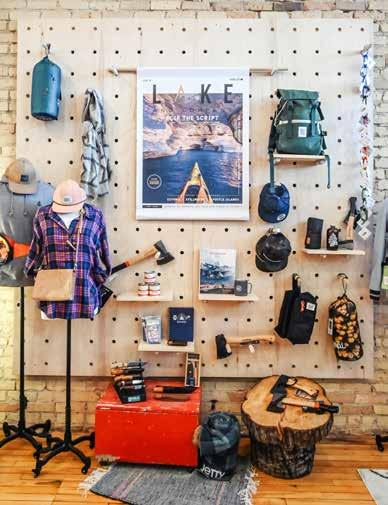
In the Minnesota outdoor enthusiast world, you’re more than the sport itself; you’re the social scene, making it an adventure on and off the hill. This is après at its finest. You’ve earned the turns and you bode apparel that can go from the slopes to the shore. When the lifts stop spinning for the day, you’re ready to swap the goggles for shades that make a statement, packs that hold it all, and a cap that will hide that helmet hair. Complete your look with these pieces that transition seamlessly from the slopes to the après deck, and even cozy cabin chic.
We urge you to immerse yourself in the stories of inspired brands that have mastered the art of marrying performance with style. These labels redefine capability in our extreme climate. Let Lake and Company be your guide to embracing the winter wonderland in unparalleled style.

Because sometimes I just want to take my craft cocktails on the road! The Cocktail Canteen contains all the tools one needs to make great drinks anywhere. The kit includes a combination peeler and zester, a collapsible jigger/shot glass, a telescoping bar spoon, a mini funnel and a TSA-compliant dropper bottle — all packed into an insulated cocktail shaker. Cheers! $40
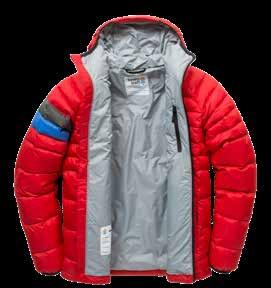
The 5 Mila half zip is designed for moderate to high-intensity training but looks great stripped down too. The merino blend fabric provides sweat-wicking and antibacterial properties, along with its ability to insulate against the cold and to breathe in warmer conditions too. $119
Need an ultra-comfy, technical layer for the kiddos that does double duty as a sole insulator on cool days or a midlayer on extra chilly days? Look no further than the Down Town Puffy from woman-owned, communitybuilt Town Hall Outdoor Co from Steamboat Springs, CO. The shell, liner and insulation are made with 100% recycled materials so you can feel good while you stay warm. $160


When style meets performance, I’m all in. These glasses feature a no-slip, no-fog, no-bounce design, which allows for unobtrusive sun protection, whatever the activity. Made from Mazzucchelli acetate, which is crafted in Italy from cotton and wood pulp, these sunnies are also environmentally friendly, making it a win-win. $199
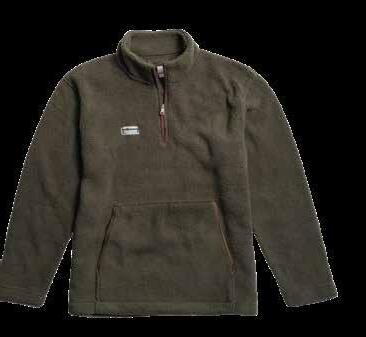
You’ve finished the day, the hill was rugged, the snow was good and you’re ready to take off the helmet. Inspired by the joy of the adventure, the Crux 5-Panel is built for the journeys ahead. $35
Say hello to this incredibly soft sherpa pullover from


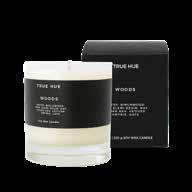
Beams of light pierce through huddled deciduous white oaks, birch and cottonwood. Stark silhouettes race across the forest floor while leaves hold on tightly to branches through their dancing in the smoky wind. This invites post-ski and the evening afterglow. $30

Decompress the right way. Rent this pop-up sauna from Lake and Company, and have après your way, anywhere, anytime. $100
With its beverage pocket, zippered Drytech pocket, sunglasses loop and interior thermal lining, this flannel does it all. It’s the perfect layer under your jacket on cold days, and it transitions into the best spring/summer “shacket” for cooler nights by the water or in the woods. $158
At Lake and Company, we believe that we are only as good as the company we keep. And we take that very seriously. We are select in the brands we collaborate with and the products we bring into our stores, as well as the content we share with our readers. We make sure that the people we surround ourselves with support the core values of our company, to ensure you the very best. People who are innovative. That value social good, conservation, and sustainability. That love the idea of strong community and are always up for a great adventure. As we grow as a brand – and as individuals – we continue to find new people, places, and things that inspire us to our core. ‘Meet the Makers’ is where we not only celebrate the brand, but the inspiration and people behind why it exists in the first place.
READ MORE ONLINE



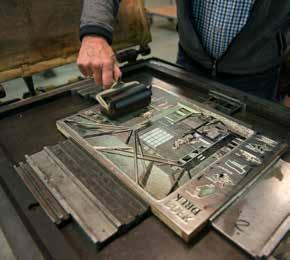
We count ourselves grateful that, from a young age, we were pushed outside by our parents. You see, we are part of the generation that rode horrendously dangerous rusted playground equipment and could go anywhere we wanted in the neighborhood, as long as we were back before dark. We were climbing trees, riding bikes on trails, finding new gullies to explore, digging tunnels, scraping our knees, and coming home with dirt-filled shoes and torn pants.
Now, even though there was a possibility our respective parents just wanted us out of the house (because, trust us when I say, neither of us was the most well-behaved child), I choose to believe that they wanted to show us a very valuable life lesson. Something that is easy to miss in our busy lives yet all around us, always accessible, free, providing endless opportunities and a gateway to a healthy body and mind state.
Looking back on those outdoor adventures, we recognize many traits we acquired that have helped us navigate our lives as adults: a strong sense of independence, self-reliance, curiosity and wonder; active imagination; and the ability to overcome fears or know when fears can be a motivator or a deterrent. Lately, I have noticed that the outdoors has taught me to overcome big challenges by breaking them down into simple step-by-step actions and to realize that the journey is always better than the end goal.
As we grew up, our closest loving relationships became rooted in discovery, well-being and the consistent need to explore. When we had our first baby, we found ourselves wondering if we would ever be able to do the things we loved with such a little miracle now at the forefront of our lives.
This is the time that really matters to us. It’s overcoming those initial moments of fear and worry and transitioning to confidence and wonder. From “How the heck can we do

this?” to “WE’VE GOT THIS!” After all, we never wanted to give up our core identities as adventurers when our love is rooted in exploration and our imagination is powered by nature. As parents, our greatest adventure is now with our children, and our new family-rooted foundation is one of outdoor exploration with a healthy dose of adventure.
As our parents taught us, we now teach our children (minus the death slides) that an outdoor lifestyle provides us with the mental, emotional, physical and growth tools to live the happiest of lives.
Milk x Whiskey was born to provide quality technical gear and apparel for when adventurers become parents. Passing our passions and experiences of the great outdoors on to our children is what drives us.
Milk is the nurturing side of how we love. Family is most important. We know having children is not the end to our adventures but rather a whole new beginning.
X is the crossroads where we find out we are expecting a child and need to decide whether to keep the outdoor adventure going.
Whiskey is the defining trait of our fearless and fun-seeking attitude toward life. We find that adventure is the binding force in our love of the outdoors, living life on our terms and now with our children. Plus, even though we are parents, we still like to party!
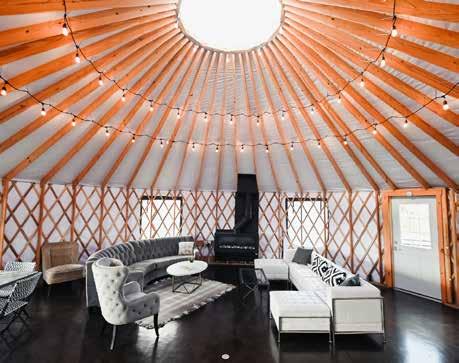
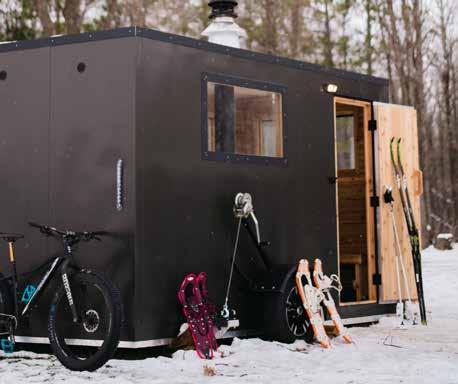

One of the quickest ways to understand Mitch Reaume, the man printing for some of the mostloved small businesses throughout the Midwest, is to hear him talk about how thin the line is between entrepreneurship and masochism.
“I’ve always said it is a pretty fine line between being an entrepreneur and a self-punishing masochist. Walking that fine line alongside other people whose small businesses I care about and believe in is a pretty fun thing to wake up for every morning.
“I know what it’s like to pour everything into a small business and have it succeed, or have it flop. At the end of the day, the ones making that roll of the dice are just my people and who I want to spend my time working hard for. Every one of these people could so easily make more money tucking their skills into some huge corporation but, for reasons beyond just money, choose not to.”
And that pretty much sums up Mitch and his company, Twin Cities Print. This company is best described as a small-business engine working tirelessly behind the scenes to bring custom apparel, drinkware and candles to every type of small company and organization you can think of — from coffee shops, restaurants and retail brands and stores, to nonprofits and churches and wealth management companies, to landscaping crews, and everything in between.
Twin Cities Print has found its niche as the thread connecting many of the Midwest’s small businesses to each other, making the “six degrees of separation” idea a reality. Six degrees of separation is the idea that all people are six or fewer social connections away from each other, and in the little, gritty world that is the Midwest’s small-business community, Mitch and his team are one that most have some sort of connection to.
For all of the connections and businesses he’s proud to work with, he’s not the most public or self-promoting business owner you’ll find; this is partially due to his open distaste of what the internet has done to the definition of entrepreneurship.
“One of the hardest things, in my opinion, about being an entrepreneur is finding the right people to admire.
“Unpopular opinion: The internet has kind of ruined the title of ‘entrepreneur.’ It has made it more a celebration of wealth, vanity and materialism than a celebration of community and character or generosity and grit.
“I think that’s honestly where a lot of my love for the small-business community has come in for me personally. It has met a need of my own in providing a firsthand glimpse of role models within the world of entrepreneurship — rather than following XYZ internet celebrity, who is deemed a success for reasons that get them into an Inc. or Fortune publication that I end up having no access to.
“I’ve got a list of business owners that I admire from the up-close look I get into the way they run their businesses and worlds. And rather than read about them, I can just call them or grab a beer with them. Lives like Nikki & Anna, Brad, Michael, Dan, Becky, Todd, Mark, Peter, Lauren, Megan, Sarah, Lee, Joe & Steven, Emily and so many more. Names that don’t mean anything to the people reading this, but that mean everything to me in the constant learning I get from them and defining what entrepreneurship really looks and feels like.”
For small businesses looking to make a splash and grow in 2024, it’s 80% about finding the right people along the way, 10% luck … and the rest can get chalked up to hard work and good ideas. There are a ton of unknowns to roadmapping what it looks like for every business to make it to the next step. But we know firsthand that there’s a long, long list of small businesses out there that pretty quickly attest there isn’t a resource or print shop that has worked harder for them and their small business than Twin Cities Print — albeit behind the reins of its quirky owner.
If you twist Mitch’s arm to get him to talk about the things he’s most proud of as a company, you’ll hear one of two things: The fact that most of the customers they get the privilege of supporting and printing for become customers for life — not because they’re the biggest or shiniest or particularly impressive by many measures, but for the simple reason that they are really, really good at what they do, and they genuinely care about their people. Most of their folks tend to pick up on those two truths over the years, and become friends and customers for the long haul.
For these reasons we applaud Mitch and the light he brings to both businesses and people. As Minnesotans, we’re lucky to have someone champion the small-business community of makers and doers. Because it makes all the difference.
TwinCitiesPrint.com
I’VE ALWAYS SAID IT IS A PRETTY FINE LINE BETWEEN BEING AN ENTREPRENEUR AND A SELF-PUNISHING MASOCHIST. WALKING THAT FINE LINE ALONGSIDE OTHER PEOPLE WHOSE SMALL BUSINESSES I CARE ABOUT AND BELIEVE IN IS A PRETTY FUN THING TO WAKE UP FOR EVERY MORNING.”
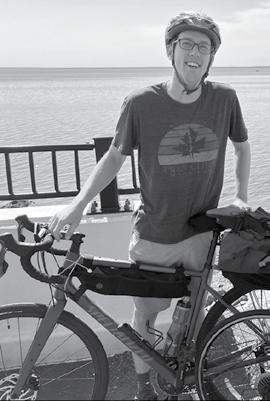

How many people give winter camping a try once, just to say “I did it,” then never go again? Winter camping is hard work. Diehards harness themselves to 100-pound pulk sleds, strap on skis or snowshoes, and start hauling their load, like oxen, through the unforgiving snow. The reward? Sleeping on the ice, eternally frozen feet and a constant battle to keep the watering hole in the lake open.
But what if there’s another way to experience the winter outdoors? An easier way? One that is still primitive, but less about
suffering. One you still have to “earn” but is more about rejoicing in nature with fellow travelers.
The solution is to ski in to remote rustic cabins. You’ll get the thrill of winter camping — immersion in the winter forest, exploration in deep powder and separation from our fake modern world — while still being able to relax enough and enjoy yourself and your company.
To find this “edge,” try skiing or snowshoeing in to the camper cabins that dot numerous state parks and public lands across northern Minnesota, Wisconsin and Michigan. The following are four trip options (with tips from previous visitors) for those aiming for the best of both winter worlds — the cozy and the extreme.

Start right off with the pinnacle of ski-in cabin culture — Tettegouche Camp. This village of four log cabins and a lodge is tucked deep in the highlands of Tettegouche State Park, in Silver Bay, Minnesota. The park dispenses the keys to your cabin at their beautiful Tettegouche Visitor Center on Highway 61. Then drive around to the west end of the park, leave your vehicle at the Lax Lake Road parking lot, and ski or snowshoe up and over Mount Baldy Pass. You’re going to break a sweat getting your belongings in a pulk sled up one of Minnesota’s steepest ascents — but it’s worth it.
Kurt Mead, Minnesota DNR interpretive naturalist at Tettegouche, describes the purpose of making the 1.3-mile nonmotorized trip in to the cabins as follows: “The walk-in nature of Tettegouche Camp is to ensure a better ‘wilderness’ experience for guests. No cars, no car alarms, no snowmobiles, plus the effort to get in there, all make it special.”
Winter is Mead’s favorite time of year to access the camp: “You can transport lots of gear in a pulk with a lot less effort than carrying it in on your back. Humping a loaded pulk up that hill can be slower than straight hiking, but then I pack my sled such that I can ride it, with all my gear, down
the other side of the mountain. Great fun, often resulting in snowy tip-overs on the way down.”
This inherent play in snowtop travel doesn’t come without some risks: “I would caution folks that skiing this trail, especially pulling a pulk, is not for the beginner. You can get a lot of momentum with a loaded sled pushing you. Snowshoeing in is slower, but less crashy,” notes Mead.
Once you make it to Camp, what can you expect in the cabin? Mead finds serenity and “escape” to be the biggest draws: “It’s so quiet. No motors or other human sounds from the outside. One of the best ‘civilized’ winter escapes that I know of.”
There is electricity in the cabins, including a two-burner stovetop, but no wifi, and spotty cell service. You’ll also need to carry water to your cabin from an outdoor pump.
But this isn’t roughing it like tent camping is in winter. Mead points out that “there are actually heated showers and toilets in a common building — luxuries for winter adventurers!”
Mead emphasizes that these are not modern cabins: “The Lodge and Cabin A
were built in 1911. Cabins B and C were built in the 1920s. All of these buildings are log, and show some interesting trends in rustic cabins of the day, borrowed from the Adirondacks region.”
Yet modern comforts prevail. Tettegouche Camp cabins have gas heat, and the thermostat is kept “cool, but not frozen,” between guests. Mead recalls one particularly harsh winter trip in: “I’d arrived at Cabin B when it was –30°F outside. Inside it was a balmy 45°F and it took a very short time for the woodstove to get it up to shirt-sleeve temperatures.”
Some final notes from Mead: “Cabins A, B and C will house a maximum of six people. That isn’t six adults and a couple of kids. Six humans total. This is a fire code issue and people have been asked to leave when in violation of this limit.” Cabin D houses two people.
There’s also a no-dog policy. “It would be a lovely place to vacation with your pooch, but this isn’t allowed,” specifies Mead.
The Tettegouche Camp cabins were all restored in the summer of 2023 and are in top condition right now. Go to the DNR reservation system and book up to 120 days in advance — these cabins are in high demand for their historic and natural beauty.
Moving across Lake Superior to Bayfield, Wisconsin, ski-in campers will find another chunk of paradise at the Terra Cotta Yurt, operated by Bayfield County. Located along the exquisite cross-country ski trail system at Mount Ashwabay Ski Area, the Terra Cotta Yurt is a 1-mile ski-in, uphill the whole way. Access to the yurt is nonmotorized only. Once there, you get a sublime elevated view over the Apostle Islands looming out of icy Lake Superior.
Ruurd Schoolderman, longtime extreme winter camper, has a soft spot for this yurt: “It’s in a beautiful, private spot, with an unreal view. You get a true backcountry experience with some comfort and access to some of the best cross-country ski trails in the region.”
The 20-foot-diameter yurt sleeps six in two bunk beds and is insulated for year-round use. A woodstove is the only heat source.
Unlike at Tettegouche Camp, there is no water source here — be prepared to haul in your own water. There’s a pit toilet/outhouse available year-round.
Schoolderman’s first winter experience at Terra Cotta Yurt came on a “brutally cold February weekend with lots of snow on the ground.” Schoolderman recounts the relief he and his partner, Virginia, had upon reaching the shelter: “The yurt was cold when we arrived, and we stoked the big woodstove up. We managed to get the yurt warm, [but] it requires some skills to make sure you keep the fire going while you’re out skiing on the phenomenal Ashwabay trail system.”
Compared to his usual winter survival forays deep into the BWCA, Schoolderman found the yurt to be just the right balance: “There is definitely some work and preparation involved. You still need to haul your gear, food and water. But you have the comfort of a woodstove, with fantastic dry wood ready to burn. You can spend lots of time skiing and enjoying cozy time inside playing games, or admire the amazing view. It’s the best of both worlds for those who like type 2 winter fun with a little comfort on the side.”
A ski pass for the Ashwabay cross-country ski trails is included in the price of the yurt, which is only $76 a night, and can be reserved on Airbnb.
it’s a cozy little paradise”
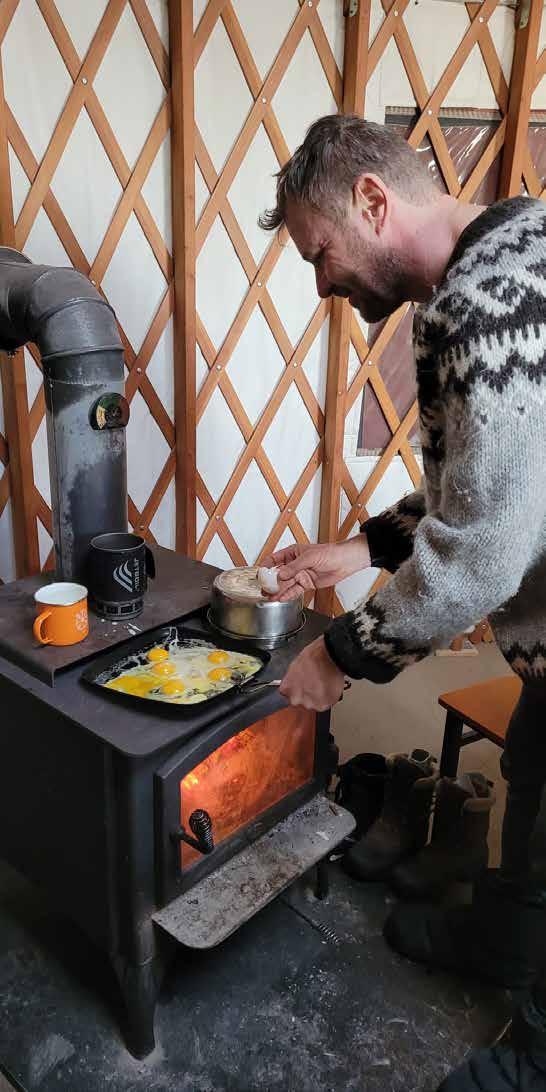
Smack dab on the Wisconsin–Michigan border is the iconic Active Backwoods Retreat (ABR) ski touring center in Ironwood, along the Montreal River.
ABR has five rustic cabins on its extensive ski-trail network. The cabins are accessible by ski or snowshoe only. There is no electricity or plumbing. There is a clean outhouse for each cabin, and heat is supplied by a very efficient woodstove with a flat cooking surface.
Nordic ski enthusiast David Baldus, of Duluth, finds that ABR has an instant edge over the competition: “It’s great because it has a ton of lake effect snow. They have 100 km of trails, and they groom every day.” If you’re looking at doing daily ski marathons, consider staying at ABR’s ski-in housing.
“It’s sweet, because you ski out to the cabins, and pulk your stuff in. I like to make a bunch of food beforehand, and we just heat it up on the stove. It’s this nice edge between camping and not camping,” recounts Baldus of his ABR experiences.
Firewood is stocked in an adjacent woodshed, and the ABR folks send you out with a firestarter pack.
Cabins are located .3 to 1 km in from the trailhead, and sleds are provided for hauling your gear. Water is available at the trailhead too — bring your own containers.
You’re entering the Eastern time zone as you traverse Michigan’s Upper Peninsula to get to Porcupine Mountains State Park. This fourth ski-in cabin destination follows the same pattern — park at a public lot, then head into the wilderness, self-supported, for the duration of your stay.
Four cabins are open during the winter months at Porcupine Mountains (one can be driven to). The cabins are equipped with bunk beds, mattresses, a wood-burning stove, a table, chairs, a fire circle, an axe, a bow saw, and cooking and eating utensils. Firewood is provided. There is no running water or electricity.
Darin Bergsven, a professional musician who brings his instruments along in winter, has a longstanding tradition with his friends of “camping” at the Union River Cabin each February.
“It’s made of big old logs,” says Bergsven. “There are often just heaps of snow piled on the cabin roof. You get the woodstove pumping, and it’s a cozy little paradise.”
One winter Bergsven offered to stay behind and process firewood while his crew went out skiing. “We were staying at the Union River Yurt that year. Everyone was out, and the firewood was getting low. I got the maul stuck in this knot in a frozen log, and could not get it out. I was absolutely convinced we were all going to freeze to death in the woods. I thought I’d ruined it for everyone. When my friends got back, Scott reminded me that we were like a 30-minute hike from our cars with heaters.”
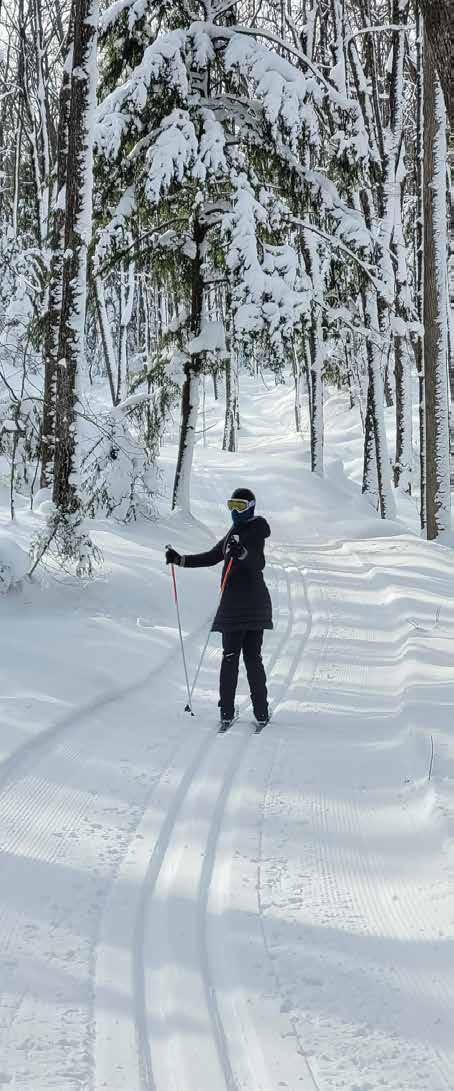
Ski-in cabin adventure s are about finding the sweet spot between roughing it and living it up. You transport your own supplies using human-powered means. You work like an ox to separate yourself from modern society. But you get to cook a hot meal in a warm place with a roof over your head at the end of the day.
This edge is a great middle ground for families, groups of friends and beginning explorers looking to experience real winter, while still being able to relax and enjoy it.
The Twin Cities Gateway is jam packed with fun Twin Cities events, attractions and things to do. Cool off at a waterpark, play a round of golf, bike the Mississippi River Trail, enjoy dinner and a show or visit a craft brewery.




SEA LIFE MINNESOTA AQUARIUM
A wonder for all ages, the aquarium is home to more than 10,000 sea creatures in 1.3 million gallons of water. Explore 30 displays including interactive touch pools, walk through a 300-foot tunnel and see a blacktip reef shark swimming with graceful rays overhead.
SAINT ANTHONY FALLS
Overlook the falls from Guthrie’s Endless Bridge that juts over the Mississippi. Be sure to walk to the base. There are 108 stairs, but the view and trails at the bottom are definitely worth the trek back up.
LORING PARK
Scenic walk through the "Central Park" of downtown Minneapolis.
MALL OF AMERICA
It boasts more than 500 stores and many bars that attract locals and tourists alike. Take the light rail to avoid traffic.
CELEBRATE FASHION IN MINNESOTA
While we are far away from New York Fashion Week, there are still a number of talented designers who reside in the Twin Cities. The University of Minnesota continues to host its Senior Fashion Show, and resale shops like b.Resale frequently partner with local designers to put on smaller-scale fashion and trunk shows. Shop the boutiques in the newly revitalized North Loop neighborhood.
THE BASILICA OF SAINT MARY
Visit the oldest basilica in the country.
PAISLEY PARK
Get a rare glimpse of Prince's 65,000-square-foot home, studio and rehearsal spaces. Throughout the experience, visitors will see artifacts from Prince’s archives, including his iconic concert wardrobe, awards, musical instruments, artwork, rare music, and video recordings and motorcycles.
DAKOTA JAZZ CLUB
See the biggest names in local, national and international jazz.
WEISMAN ART MUSEUM
Explore the 25,000 art pieces dating from the early 20th century to contemporary America — even the building is a modern American art piece.
WALKER ART CENTER (AND SCULPTURE GARDEN)
Capturing the visual, performing and media arts.
RIVERVIEW THEATER
Watch an indie film or recent blockbuster at the 1950s-style theater — tickets are $3!
TAKE A NORTHEAST BREWERY TOUR
They make some great beer in the Twin Cities. Head to Northeast for the brewery trio of 612 Brew, Indeed Brewing Company and Dangerous Man Brewing Co.
SEE A SHOW AT THE GAY 90S
If you can manage to make your way through the bachelorette parties, a show at the Gay 90s is just about the most fun a person can have in downtown Minneapolis. Each night several performers take to the stage, performing in drag as such icons as Whitney Houston, Dolly Parton, Madonna and Lady Gaga.
SEE A PLAY. ANY PLAY!
Minneapolis is the third-largest theater market in the nation, with venues ranging from big players like the Guthrie and the Ordway to smaller venues like the Southern, Brave New Workshop and Mixed Blood. There are festivals and performances for any age and price range, making the theater scene diverse and entertaining enough to please even the most theater-averse.
CHANHASSEN DINNER THEATRES
Drama at the dining table at the country's largest dinner theater.
WATCH A LOCAL ACT HEADLINE FIRST AVENUE
First Avenue may get some major talent through its doors, but watching a local band headline the star-covered venue for the first time is always a special treat.
RIDE THE FERRIS WHEEL AT BETTY DANGER’S
This kooky “country club” features a giant Ferris wheel overlooking Northeast Minneapolis.
SHOP LOCAL AT THE MILL CITY MARKET
Whether you’re searching for produce or one-of-a-kind gifts, the market at Mill City Museum is a must-visit.
GO WILD AT THE COMO PARK ZOO
Where else can you see giraffes, tigers and polar bears in Minnesota?
HIKE FORT SNELLING STATE PARK
Not just for historical reenactments, Fort Snelling is also home to Pike Island, which makes for a scenic day trek.
LAUGH AT ACME COMEDY CLUB
The open mic night is the best place to heckle stand-up hopefuls, but they do get some really great talent in here.
AAMODT'S HOT-AIR BALLOON RIDES
Committed to providing the most intimate and romantic balloon excursions, with smaller-sized groups and the most beautiful setting.
JOSEPH WOLF BREWERY CAVE TOURS LUNA
ROSA WINE BAR
The Joseph Wolf Brewery Cave Tour is a walking tour that lasts about 30 minutes while you learn the historical details of how the cave was built, what it was used for and how it relates to the history of Stillwater.
• HOTEL LANDING, WAYZATA
• THE KIMPTON GRAND HOTEL, MINNEAPOLIS
• HOTEL IVY, A LUXURY COLLECTION HOTEL, MINNEAPOLIS
• HEWING HOTEL, NORTH LOOP, MINNEAPOLIS
• LOEWS MINNEAPOLIS HOTEL, MINNEAPOLIS
• W MINNEAPOLIS THE FOSHAY, MINNEAPOLIS
• RADISSON BLU, MINNEAPOLIS
• NICOLLET ISLAND INN, MINNEAPOLIS
• THE SAINT PAUL HOTEL, ST. PAUL
• WATER STREET INN, STILLWATER
• OMNI VIKING LAKES HOTEL, EAGAN
• GARY’S SUPPER CLUB
• SOUTHERN SOCIAL
• BOLUDO
• THE CHOCOLATE MOOSE
• DA VINCI PIZZA AND PASTA
• FARMBLOOMINGTON
• CHURCHILL STREET
• SERUM’S
• THE EXCHANGE
• R.J. RICHES
• TEXTILE CENTER
• MALL OF AMERICA
• LINO LAKES MARKETPLACE
• 50TH AND FRANCE
• THE SHOPS AT WEST END
• THE SHOPPES AT ARBOR LAKES
• MYSTIC LAKE CASINO
• THE LAKE HARRIET WINTER KITE FESTIVAL
• THE ESCAPE GAME MINNEAPOLIS
• NICKELODEON UNIVERSE THEME PARK
• SEA LIFE AT MALL OF AMERICA
• MERMAID ENTERTAINMENT CENTER
• FUN LAB
• URBAN AIR
• CROONERS
• MAJESTIC OAKS
• HOLIDAY ON MAIN
• MAGIC OF LIGHTS AT VIKING LAKES
• LOPPET CUP
• THE GREAT NORTHERN
• WOMEN’S AND MEN’S BIG 10 BASKETBALL CHAMPIONSHIPS
• CANDY CANE INSTITUTE
• FESTIVAL OF TREES
• HOLIDAY MUSIC FESTIVAL
• SANTA’S WORKSHOP SHOREVIEW COMMUNITY CENTER
• HERB BROOKS HOLIDAY CLASSIC HOCKEY TOURNAMENT
• BRAVE THE BRRR BRIGHTWOOD HILLS/NEW BRIGHTON FEATURING THE BARTZ BROTHERS SNOW SCULPTURE


CZECH INN BED & BREAKFAST RETREAT
B&B CAFE
BIG ISLAND GRILLE & BAR
BROADWAY BIKE CO.
COURTYARD BY MARRIOTT HOTEL
101 MAIN RESTAURANT
OLIVES
RIVERFRONT BRIDAL
LANESBORO
ROOT RIVER INN & SUITES
JUNIPER'S PEDAL PUSHERS
PADDLE ON COFFEE & MAKER EMPORIUM THE PEDDLER
HIDDEN HALLS PUZZLE HOUSE
EXPERIENCE THE MAGIC CHRISTMAS IN LANESBORO
GAMESBORO
LOVEBIRDS IN LANESBORO CABIN FEVER
NEW ULM
OLD HAUENSTEIN BREWERY
RUSH ROOFTOP RESTAURANT
INSPIRED
GALLERY
PINBALL PLACE
BAGGIN’ IN THE STREET ROCHESTER
CAFÉ
POSH
ALEXANDER
ACOUSTIC
Where
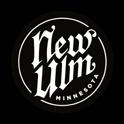

Enjoy the newest spots in town. Rush, a rooftop restaurant,has an eat-in igloo in the winter. Savor adult beverages at Sweet Haven Tonics lounge, and Black Frost Distilling. Wander the new boutiques — Minne Cabana, Gyspy Girl Consignment Boutique and Rustic.
newulm.com
#newulm #germanshavemorefun
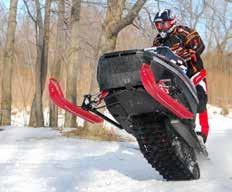
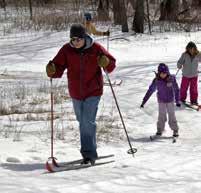
Discover how Germans Have More Fun in the most German city in America! Located just 90 miles from Minneapolis on the beautiful Minnesota River Valley National Scenic Byway, New Ulm has something for everyone.
Visit the 102-foot “Hermann the German” Monument overlooking the city; enjoy a tour and tasting at Schell’s Brewery, the second-oldest family-owned brewery in America; shop the unique boutiques in the historic downtown; hear 37 bells chime from our Glockenspiel and sip a cocktail in the Rathskeller of Turner Hall, the oldest bar in Minnesota.
With more snow and cold temps in the forecast, many of us are feeling the winter blues. Now is the perfect time to plan a getaway to New Ulm! Plus, there are added perks to visiting New Ulm this time of year, including lower hotel rates and fewer crowds to fight.



THUMPER POND RESORT
UNION PIZZA AND BREWING COMPANY
FALL’S BAKING COMPANY
THE BRIC HD BOUTIQUE
PRAIRIE WETLANDS LEARNING
NEW YORK MILLS CULTURAL CENTER
EDDY’S RESORT & THE LAUNCH BAR & GRILL
REEDS FAMILY OUTDOOR OUTFITTERS
GRAND CASINO MILLE LACS
ARROWWOOD LODGE AT BRAINERD LAKES
HOLIDAY INN EXPRESS QUARTERDECK ON GULL BOATS AND BEYOND
PELICAN LAKE FISH HOUSE RENTALS
OX LAKE TAVERN
NORWAY RIDGE SUPPER CLUB
LUCKY’S TAVERN WINGS AIRPORT CAFÉ
SUNSHINE’S SUMMERHOUSE
MN TRADERS CO
SHOPPE 218
CURIOUS BELONGINGS
CHRISTMAS POINT WILD RICE CO VK CARIBBEAN GROCERIES
MOUNT SKI GULL
DOG-SLEDDING AT CRAGUN’S RESORT ON GULL
WINTERFEST IN CROSSLAKE (FEB 1–3)
BOBBER BOCCE ON ICE ON SIBLEY LAKE IN PEQUOT LAKES (FEB. 10)
50TH ANNUAL ST. PATRICK’S DAY PARADE & CELEBRATION IN CROSSLAKE (MARCH 16)
IRONTON ISLAND
CUYUNA MATATA
THE SANCTUARY
THE DRUNKEN NOODLE
NORDIC HUS COMPANY
HIGH WHEEL CONFECTIONARY & COFFEE HOUSE
CUYUNA OUTFITTERS
VICTUAL LAKE & COMPANY
CUYUNA COUNTRY STATE RECREATION AREA
CUYUNA OFF-ROAD TRI (JUNE 2024)
CUYUNA CRUSHER (AUG 2024)
BIG SANDY LODGE & RESORT
ADVENTURE NORTH MN
ARROWWOOD RESORT AND CONFERENCE CENTER
PIKE AND PINT GRILL
COPPER TRAIL BREWING
CARLOS CREEK WINERY + 22 NORTHMEN
BREWING COMPANY
PANTHER DISTILLERY
KINDRED PEOPLE
RUNESTONE MUSEUM
BEST WESTERN PLUS KELLY INN
COURTYARD BY MARRIOTT
HILTON GARDEN INN
HOLIDAY INN & SUITES
RESIDENCE INN
ARROY THAI & FILIPINO
JULES’ BISTRO
KOHINOOR BAR & GRILL
BRAVO BURRITOS
ULTIMATE SPORTS BAR & GRILL
CROSSROADS CENTER MALL
GREEN THUMB ETC
COPPER PONY
THE GRANDE DEPOT
PIONEER PLACE ON 5TH
PARAMOUNT CENTER FOR THE ARTS
QUARRY PARK & NATURE PRESERVE
ICE SKATING ON LAKE GEORGE
BELLA VITA SALT CAVES
POWDER RIDGE LAZER LIGHT TUBING
ST. CLOUD STATE MEN’S HOCKEY
ST. CLOUD LIGHTS FESTIVAL
ST. CLOUD CRAFT BEER TOUR (JAN 20)
BOLD & BRIGHT (JAN 25-28)
CHASE ON THE LAKE
THE WATERSHED
BIG FISH SUPPER CLUB
HERITAGE ARTS & GIFTS
JENNY’S BEEHIVE



BEST WESTERN
FIVE LAKES RESORT
HUB-41
ROASTED PUB & EATERY + BAKED IN DL
L&M FLEET SUPPLY
MAIN STREAM BOUTIQUE
HISTORIC HOLMS THEATRE
DETROIT MOUNTAIN RECREATIONAL AREA
RUTTGER’S BIRCHMONT LODGE
BEMIDJI BREWING TRC BAR & GRILL
L&M FLEET SUPPLY
BEMIDJI WOOLEN MILLS
WATERMARK ART CENTER HEADWATERS SCIENCE CENTER
BALLARD’S RESORT
ALICE’S FAMILY RESTAURANT LAKE OF THE WOODS BREWING COMPANY RONNINGS
ICE FISHING
HOCKEY DAY MN 2024 (JAN 25-27)
HEARTLAND INN HOTEL & SUITES AMERICINN
SUPER 8 PARK STREET INN
THE GOOD LIFE CAFE 218 VENTURE BAR & EATERY
KATHRYN'S ON MAIN LAZY ONE THIRD STREET MARKET
THE GOLF CAVERN
HEADWATERS GOLF CLUB
ITASCA STATE PARK
ITASCATUR OUTDOOR ACTIVITY CLUB
SOARING EAGLE SKI TRAILS
BOWEN LODGE
LITTLE LAZY LODGE
TRAPPER’S LANDING LODGE CHASE ON THE LAKE
GREEN SCENE MARKET, EATERY & COCKTAIL BAR
THE PIGGY BBQ
REEDS FAMILY OUTDOOR OUTFITTERS
LUNDRIGANS CLOTHING
CASS COUNTY HISTORICAL MUSEUM FORESTEDGE WINERY
MOE’S BURGERS & BREWS
THE HIVE BAR & GRILL
BLACK CAT SPORTS BAR & GRILL
SARA JANE BOUTIQUE DIAMONDS & DESIGNS
INGRAM’S CANDY RONNINGS
KAYAKING BIKING FISHING
RIVERFEST
PENNINGTON COUNTY FAIR INCLUDING THUNDER ON HOOVES BULL RIDE WOJO’S RODEO
Where are your favorite places to stay, dine, shop and play?

Uniquely crafted style inspiration for the northern bride. Featuring beautiful bridal fashions, decor, floral, stationery, hair, makeup and more!

Helping couples find the very best. A reliable directory of the area’s premier venues and wedding vendors.

Shop accessories and items that will complete the look to your big day with unique details.


CANAL PARK BREWING COMPANY
BENT PADDLE BREWING CO
GREAT LAKES AQUARIUM
LAKE SUPERIOR MARITIME MUSEUM
LAKE SUPERIOR ZOO
VILLAS AT GIANTS RIDGE
GREEN GATE GUEST HOUSES
MISTY SHOALS HAVEN
THE WHISTLING BIRD
BOOMTOWN WOODFIRE BAR & GRILL
KUNNARI'S FARM MARKET
CANELAKES CANDIES IN VIRGINIA
IRMA'S FINLAND HOUSE
GIANTS RIDGE RECREATION AREA
REDHEAD SNOWSHOEING
LOOKOUT MOUNTAIN
CAREY LAKE PARK
THE SAX-ZIM BOG FOR BIRDING
LASKIAINEN FINNISH SLIDING FESTIVAL (FEB 3-4)
LAKE COMMUNITY CENTER - FIRST SATURDAY IN FEB.
CASCADE LODGE
FIKA COFFEE
GOOSEBERRY FALLS STATE PARK
SPLIT ROCK LIGHTHOUSE TOUR
BEST WESTERN PLUS SUPERIOR INN
THE FISHERMAN'S DAUGHTER
LAKE SUPERIOR TRADING POST
GRAND MARAIS ART COLONY NORTH HOUSE FOLK SCHOOL
HYGGE FESTIVAL (FEB 3-14)
MITCHELL-TAPPAN HOUSE
COMFORT INN & SUITES MOUNTAIN IRON & VIRGINIA
SUNRISE BAKERY (HIBBING)
KUNNARI'S (VIRGINIA)
BOOMTOWN BREWERY & WOODFIRE GRILL
IRON RANGE APPAREL (VIRGINIA)
GIANTS RIDGE IN BIWABIK
MINNESOTA DISCOVERY CENTER
SNOWSHOE TRAIL EVENTS (CHISHOLM)
LASKIAINEN FINNISH SLIDING FESTIVAL (FEB. 3-4)
GRAND ELY LODGE RESORT
STONY RIDGE RESORT
INSULA RESTAURANT
BOATHOUSE BREWPUB & RESTAURANT
EVERGREEN RESTAURANT AT GRAND ELY LODGE
MEALEY'S GIFT & SAUNA SHOP
POTLUCK KITCHENWARE
BLUE LOON GALLERY & BOUTIQUE
GRACIE’S PLANT WORKS
ELY FILM FESTIVAL (FEB 8-11)
ELY WINTER FESTIVAL (FEB 1-11)
WOLFTRACK CLASSIC SLED DOG RACE (FEB 25)
GREEN GATE GUESTHOUSES
BENDER'S SHOES
L&M FLEET SUPPLY
UNITED STATES HOCKEY HALL OF FAME
MINNESOTA DISCOVERY CENTER
HOTEL RAPIDS
KLOCKOW BREWING
RAPIDS BREWING CO.
NOPO COFFEE COMPANY
LAKE & COMPANY
BENDER’S SHOES
L&M FLEET SUPPLY
REIF PERFORMING ARTS CENTER
CENTER FITNESS & BALA MED SPA
EBEL’S VOYAGEUR HOUSEBOATS
CARIBOU HIGHLANDS LODGE
THE STRAND WATERFRONT DINING & WINE BAR THE STUBLI
SAWTOOTH OUTFITTERS
THE NORTH COUNTRY
LUTSEN MOUNTAINS
VOYAGAIRE LODGE & HOUSEBOATS


Hidden in the depths of the earth lie ancient glacial lakes. The mineral-rich water within these crystal-pure lakes has long been known for its healing and rejuvenating properties. It is from these waters that spas originated, with people traveling for miles to seek out healing waters. We believe that water can be key to making your resort spa experience uniquely refreshing and help restore natural balance to your body.
1. Bonding Session
Just like the pub or the park, spas are now widely seen as a place one can hang out. More people are visiting spas in groups. People tend to use that as a motivating factor to visit the spa regularly.
2. Detox
Detoxification is getting rid of the unhealthy substances from the body. There’s no better place to do that than the spa.
3. Improve Confidence and Self-Esteem
People who visit the spa for treatments are generally happy. This happiness can be equated to positive energy. The feel-good factor can be easily transferred to the people around and can significantly change how you approach things.
4. Help Lower Your Blood Pressure
Having a massage session will calm the sympathetic nervous system, which is responsible for raising blood pressure. The hot water in a spa bath and a massage will lower your blood pressure while increasing your heart rate.
5. Reduce Pain
Spas are very common with visitors looking to get rid of back pain and the general protection of their spine. A massage works wonders in reducing or removing such pain. The increased flow of blood throughout the body helps get rid of stiffness, aches, muscle tension and pain.
Nestled in a soothing atmosphere of pines and nature, embrace the restorative nature of water at Grand View Lodge spa resort. Minnesota has a rich history of water. Come. Renew. Celebrate the beauty of life as your resort spa experience awakens and gently calms your mind, body and spirit.
6. Reduce Stress
There’s an alarming rate of increase in people suffering from mental health issues. Having a regular visit to the spa will help clear your mind during and after treatments and will also ease your sleeping patterns at night. Sleep is essential in reducing stress, which in turn leads to better mental health.. .
7. Meditation
A spa treatment provides one of the best ways to enjoy your peace of mind and meditate. Meditation increases happiness and improves concentration.
8. Healthy Skin
Spas are best known for the numerous skin treatment options they offer. Exfoliation is one of the most common skin treatment therapies. Smoother skin is achieved by extracting dead skin and rough cells. This is how softer and glowing skin comes about.
9. Relaxation
Getting a spa treatment might be the perfect way to relax after a long day. You can make a spa your spot for recharging to face new challenges that the day brings. A spa offers a completely different environment, almost replicating another world. You can use the lack of distraction as an excellent way to relax both your body and mind.





Spirit Mountain is a winter playground for any adventure enthusiast, boasting the second-largest vertical drop in the Midwest. Come build your own snowy adventure with endless experiences — like skiing, snowboarding, snow tubing and fat-tire biking — all while enjoying breathtaking views of Lake Superior.

This top-to-bottom park is known far and wide for having the best jump line and some of the most creative and well-set jibs to make it one of the best parks in the Midwest. Enjoy fourplus separate freestyle terrain areas located throughout the ski area. This park has received national accolades and comparisons with many of the premier terrain parks in the industry!

Enjoy two unique locations for Nordic skiing. The Upper Spirit Mountain Nordic Center offers beautifully wooded crosscountry ski trails, double-tracked, and a skate lane, plus the new Grand Avenue Nordic Center trails are complete with snowmaking and world-class grooming.
Experience the thrill of sliding down a snowy run and then effortlessly riding back to the top of the hill on a tubing lift. This perfect family activity is for anyone ages 3 and above. Glow Tubing is also offered on Friday and Saturday nights.

WHETHER YOU ARE A PRO OR A BEGINNER, TRAVELING WITH FRIENDS OR FAMILY, SKI RESORTS IN MINNESOTA HAVE SOMETHING FOR EVERYONE.
Minnesota boasts one of the longest downhill skiing seasons in the country, which makes the area attractive for folks planning winter vacations. Coupled with Minnesota’s rich forests and 10,000 lakes, downhill skiing is a great way to take in the northern wilderness.
And after a day on the slopes, there’s nothing better than connecting with friends to share stories. The après-ski scene is discreet but lively for slopeside — from cozy hearths to speakeasies, we’re here to recognize the hills and our top spots!
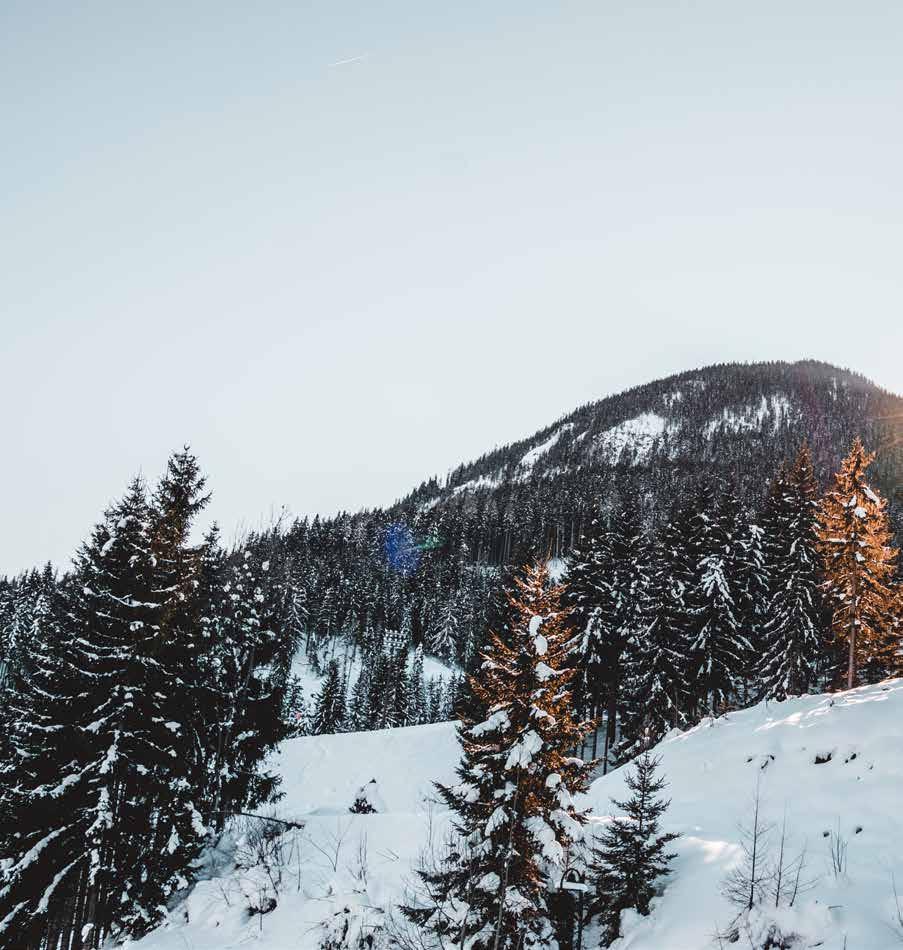


Believe it or not, après-skiing has been around long before you and me. Certainly before shotskis and PBR’s.
Here’s a brief history of après-ski:
• Celebratory food and drink after a day of skiing first became a custom in Norway in the late 19th century, a tradition that quickly moved from individual homes to the first-ever ski clubs.
• The tradition made its way from Norway to the French Alps, where small villages like Chamonix began establishing the first ski hotels. The custom was adopted and given the french name “aprèsski,” a way to celebrate surviving another day in the cold and rugged Alps.
• The act of après-skiing spread to Austria and Switzerland and given the German name “gemütlichkeit,” which roughly translates to “a good time was had by all.” Fortunately for all of us non-German speakers, the term après-ski assumes gemütlichkeit is being had by all, and we can stick with the easier-to-say and more encompassing term “après-ski.”
• Americans discovered après-ski in the early 20th century, and like all great worldwide traditions, adopted it and brought it back to the States. The cultural appropriation started with ski clubs in New England.
• Après-skiing spread west to the first ski clubs of Donner Pass and Yosemite in California, Mount Rainier in Washington, and eventually to the West’s first destination ski town of Sun Valley, Idaho, in 1936.
• Après-ski culture spread to the old mining towns of the West, places like Breckenridge, Aspen and Alta, Utah. Authentic mining towns of the Wild West were the perfect place to adopt the après-ski culture. This period of après-ski industry growth and nationwide appeal is now considered the Golden Age of Après-ski.
• The '60s and '70s brought sex, drugs, rock-androll, Hollywood starlets, callous businessmen, mega-resorts, non-skier lodge bunnies and other opportunists dabbling in the original American après-ski culture.
• Today’s après-ski scene has slowly morphed into a diverse melting pot of ski cultures. And instead of wine and cheese, we’re serving light beers, dark beers, Mexican beers, french fries, veggie burgers and nachos.
CHECK OUT OUR FAVORITE STOPS ALONG THE WAY!
WE LOVE HEARING FROM YOU!
TELL US YOUR TOP SKI SPOTS
Spirit mountain
Duluth, MN
Not too far from Spirit Mountain you’ll find this hot spot among locals and visitors. With some of the best brews around, Canal Park Brewing Company makes for a memorable experience. With amazing views of Lake Superior and a menu full of unique flavor combinations, beer might even be an afterthought!
Canal Park Brewing Company
Grand Rapids, MN
The Mount Itasca Winter Sports Center is a beautiful ski center located just minutes from Grand Rapids, Minnesota. Hotel Rapids Bar and Bistro has a yurt to cozy up in after a day on the hills, ski jumps or tube hill.
Hotel Rapids Bar and Bistro
Kimball, MN
Hasting, MN
Afton Alps is the largest ski area that is technically within the Twin Cities metro. If you’ve made the trip to Afton, you’ll find plenty of après right on site. Paul’s has a big double fireplace, a full kitchen and a full bar. On select weekends, the Cantina is open for margaritas and tacos. Live music and special events occur throughout the season.
Paul’s
Lutsen, MN
Lutsen Mountain — the Upper Midwest’s biggest ski area — has plenty of awesome après-ski options. Made up of Eagle, Ullr, Mystery and Moose Mountains, there is a wide range of runs for all skill levels, including adaptive skiing and equipment. They’ve recently inserted a new gondola and high-speed chair lifts that rival equipment at Colorado resorts.
Biwabik, MN
Giants Ridge, on the Iron Range, is a laid-back ski area in the great Northwoods of Minnesota. After leaving all you had on the slopes, head over to the resort’s best après bar: The Burnt Onion. Great food, a fully stocked bar, a fireplace and live music on the weekends make the Burnt Onion a perfect place to rest your tired legs.
The Burnt Onion
Detroit Lakes, MN
DM’s music scene and venue are reason alone to book the trip. Check out Music on the Mountain at Detroit Mountain.com for a music and event schedule. You won’t be disappointed.
Nisswa, MN
If you’ve been shredding Mount Ski Gull in the Brainerd Lakes Area, the best nearby après scene is going to be at Zorbaz, just a little way up the shore of Gull Lake from the ski area. Zorbaz is a perennial party favorite in Minnesota’s lake country, and winter doesn’t slow down the drinking, camaraderie and music one bit.
Zorbaz
Wild Mountain
Taylors Falls, MN
If you’ve been shredding for hours at Wild Mountain in the St. Croix River Valley, you’ve found the place where you can mingle, eat, drink and listen to some live music.
Welch Village
Welch, MN
Spiral Brewery, named after the historic Spiral Bridge, is truly something special. With its stylish urban interior, top-notch craft beer and knowledgeable staff, you’re in the best.
Sip your way through the beer list — you’ll find some unique flavors in their standard and seasonal brews on tap.
Spiral Brewery
Burnsville, MN
Buck Hill is where Lindsey Vonn got her start. If you’re in the area, make sure to take advantage of the awesome après scene at the Black Diamond Restaurant & Bar. The Black Diamond music series ensures that you’re having as much fun in the chalet as you were on the hill. The bar and your fellow downhill enthusiasts take care of the rest.
Black Diamond Restaurant & Bar
Coffee Mill Ski area
Wabasha, MN
In Southeast Minnesota, you’ll find plenty of vertical in the bowl of Coffee Mill Ski Area, but you’ll find the best aprés a few blocks from the foot of the runs at the historic Hotel Anderson and its newly reopened speakeasy, Lost Dutchman, in beautiful downtown Wabasha. The welcoming pub atmosphere and friendly people will help warm your soul after an afternoon on the hill.
Lost Dutchman
Mankato, MN



VOTED #1 SKI RESORT IN MN (MN’S BEST)
RATED #1 OVERALL SKI RESORT IN MN (ONTHESNOW.COM)


